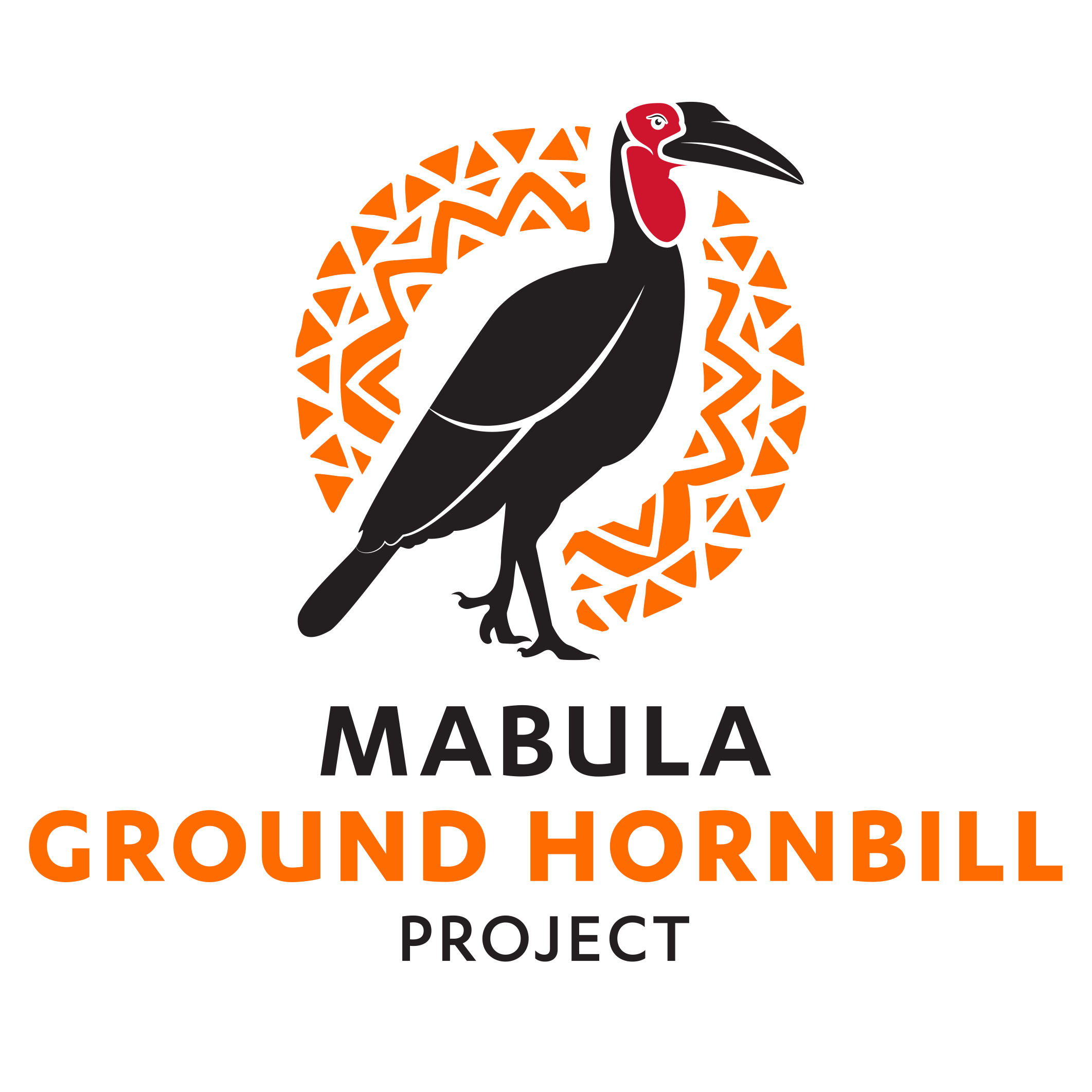THE THUNDERBIRD
MABULA GROUND HORNBILL PROJECT
NEWSLETTER
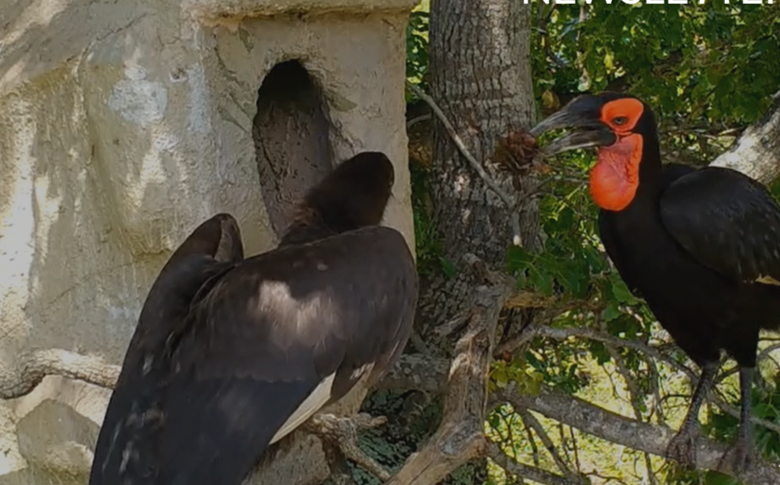
#THUNDERBIRDTHURSDAYS
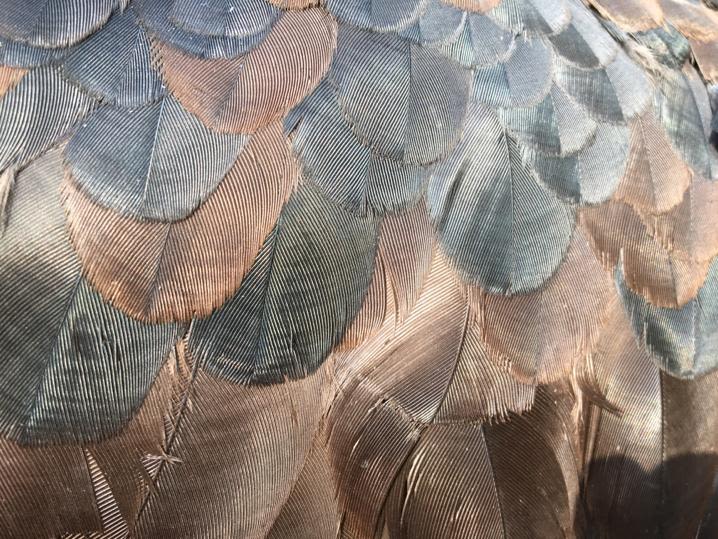
A yearling moulting its baby-brown for big-boy-black plumage.
A yearling moulting its baby-brown for big-boy-black plumage.
Thanks to everyone who has started sharing their ground-hornbill stories on a Thursday under the hashtag #thunderbirdthurdays. We are together creating a community of people who know, love, understand and protect these birds.
conservation in the time of COVID-19
As ground-hornbills continue to play with no knowledge of what us humans are facing, we hope that our news will bring some light to your day in these frightening and uncertain times. We are doing our absolute best to continue our conservation work, despite the necessary limitations imposed in the effort to #flattenthecurve.
compassion, kindness and love are what we hope this period will be remembered for
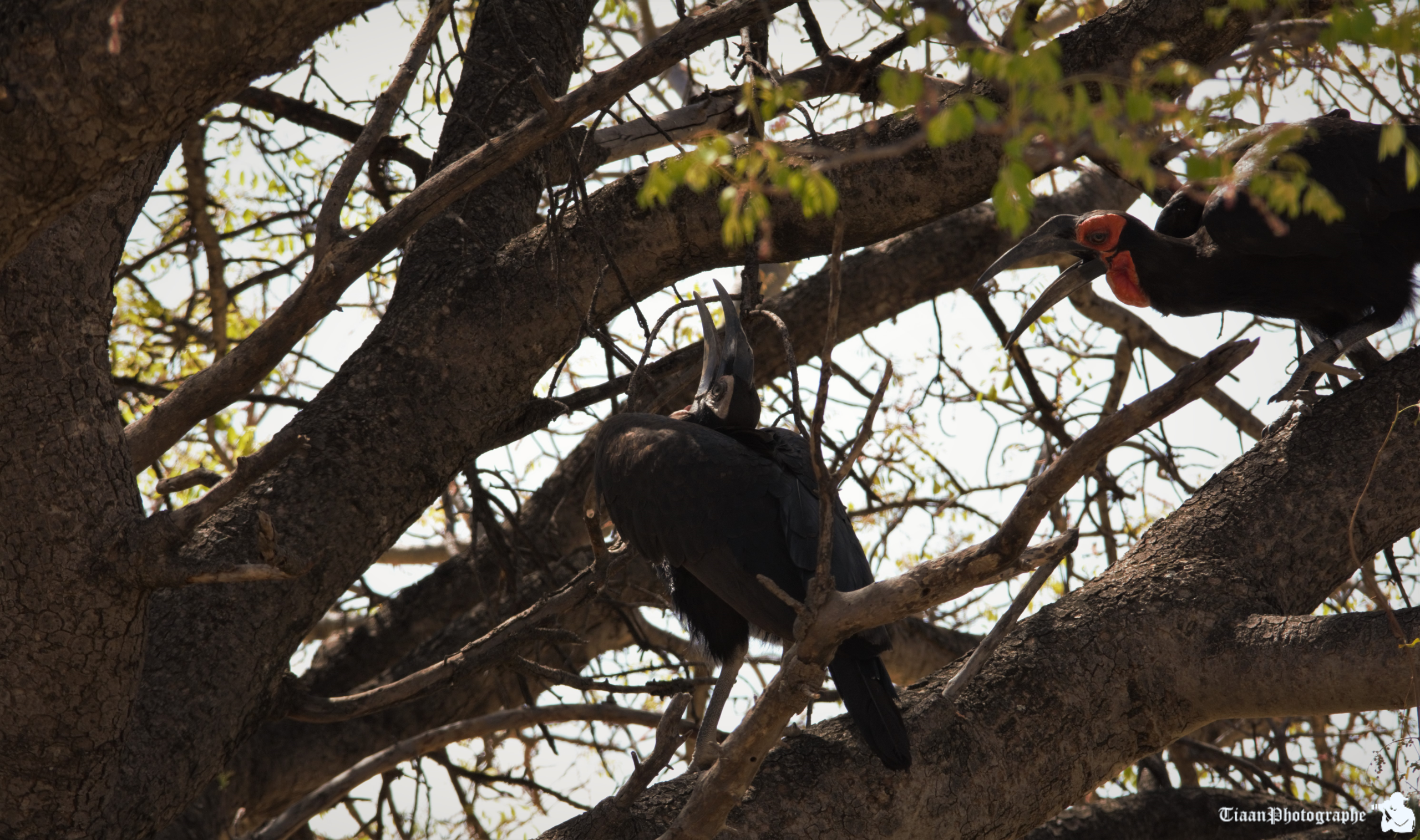
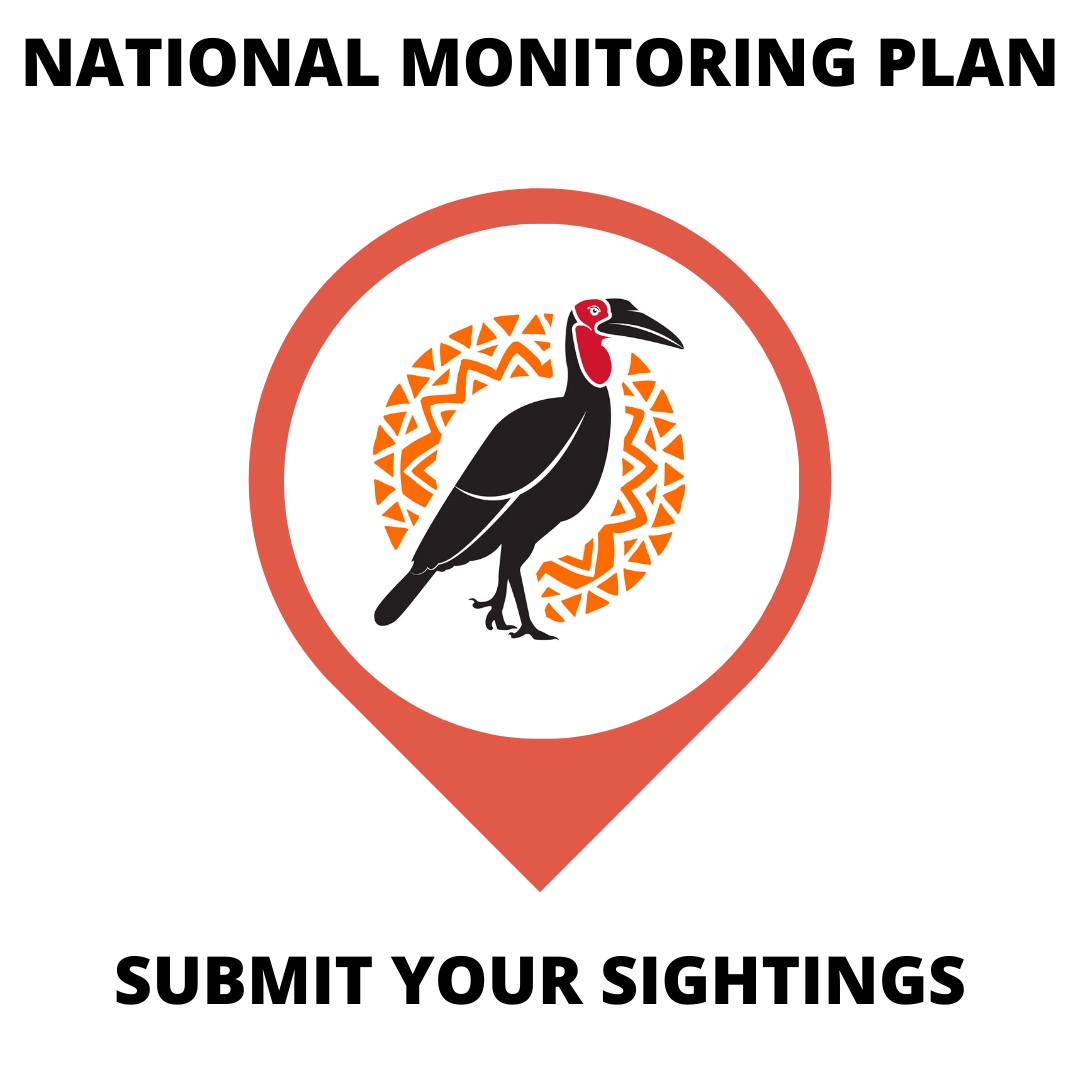
We launched the National Monitoring Plan in January, that will run in conjunction with a National Biodiversity Plan for the species. This was originally developed as a provincial monitoring plan, in collaboration with Ezemvelo KZN Wildlife, but has been accepted as the most effective method to monitor the entire national population.
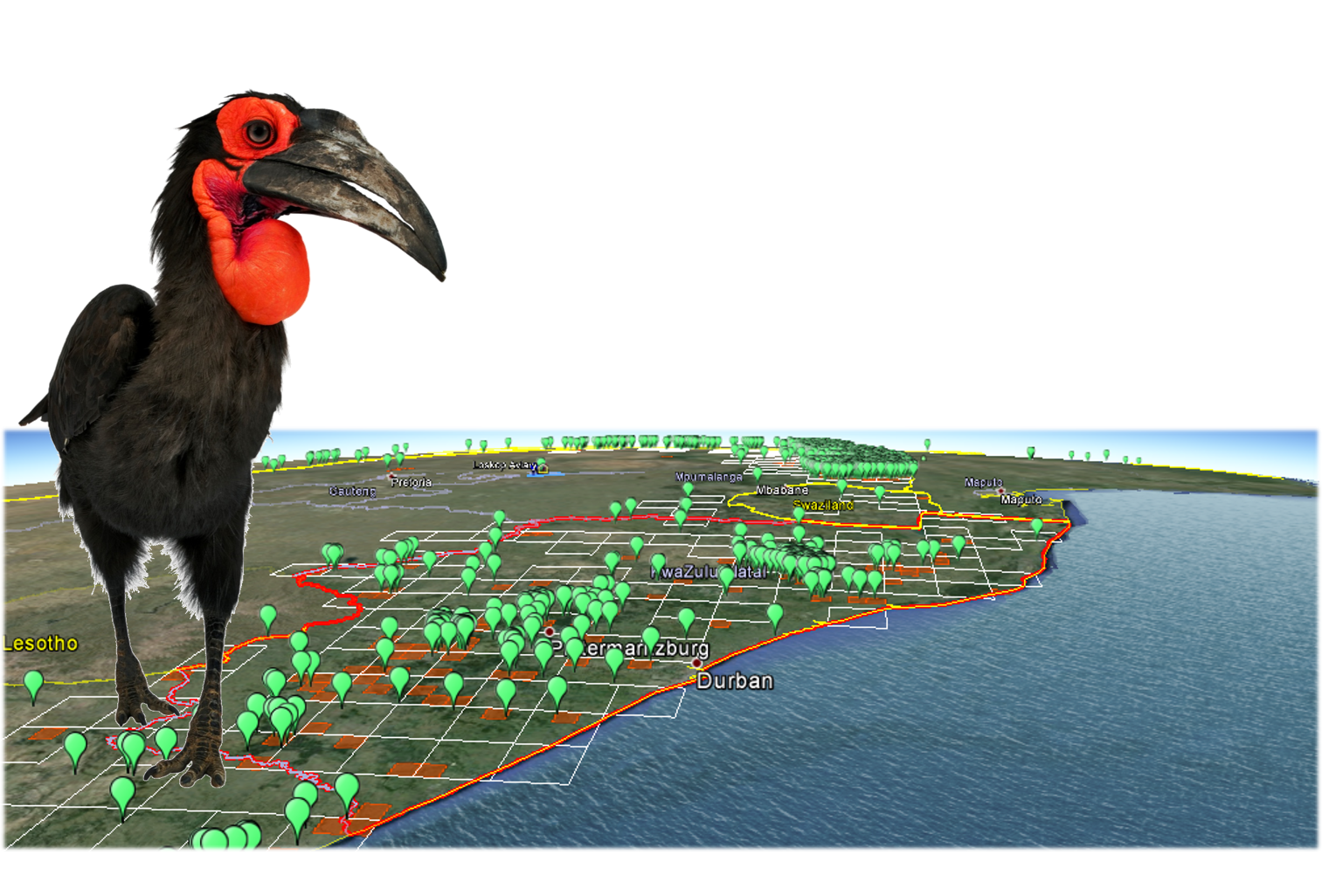
Ground-hornbills are extremely difficult to census given that they occur naturally at low-density and even up to 10 visits to a territory may not assure a sighting. The good news though is that they remain resident on what appear to be permanent territories – perhaps even inherited from generation to generation - along with good quality nests, and so we can monitor them in situ on these territories.

We are undertaking the monitoring at the same scale as the South African Bird Atlas Project, that of one pentad, five minutes of latitude by five minutes of longitude, squares with sides of roughly 9 km, which roughly equates to an average-sized territory. On an annual basis each pentad will be colour-coded as green, yellow or red, based on group presence and/or absence data received.
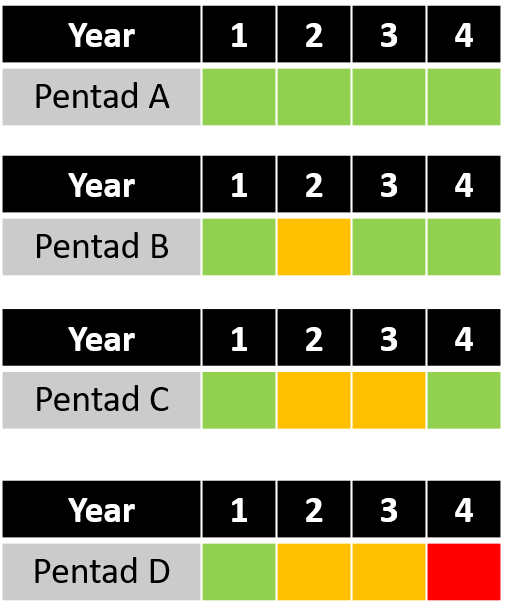
Using the above example, in pentad A, a record for the resident group is reported every year, thus this pentad stays green, and thus of no cause for concern. Pentad D however shows the other extreme. A group is reported in the first year, but no reports in subsequent years means this pentad must be red-flagged. A cluster of red pentads means we have a real problem. We can then target our resources to understand the problem, and, if possible mitigate for the threats, or if necessary even reintroduce birds into that area.
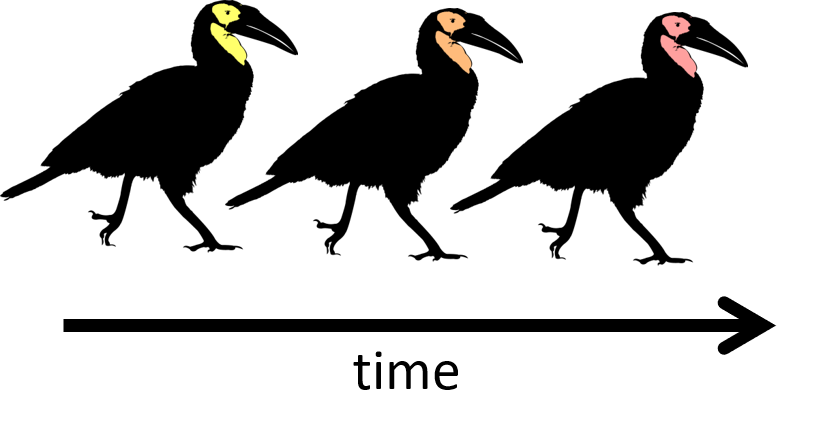
Any photos or description of the age and sex composition in groups also helps us follow breeding success.
Any photos or description of the age and sex composition in groups also helps us follow breeding success.
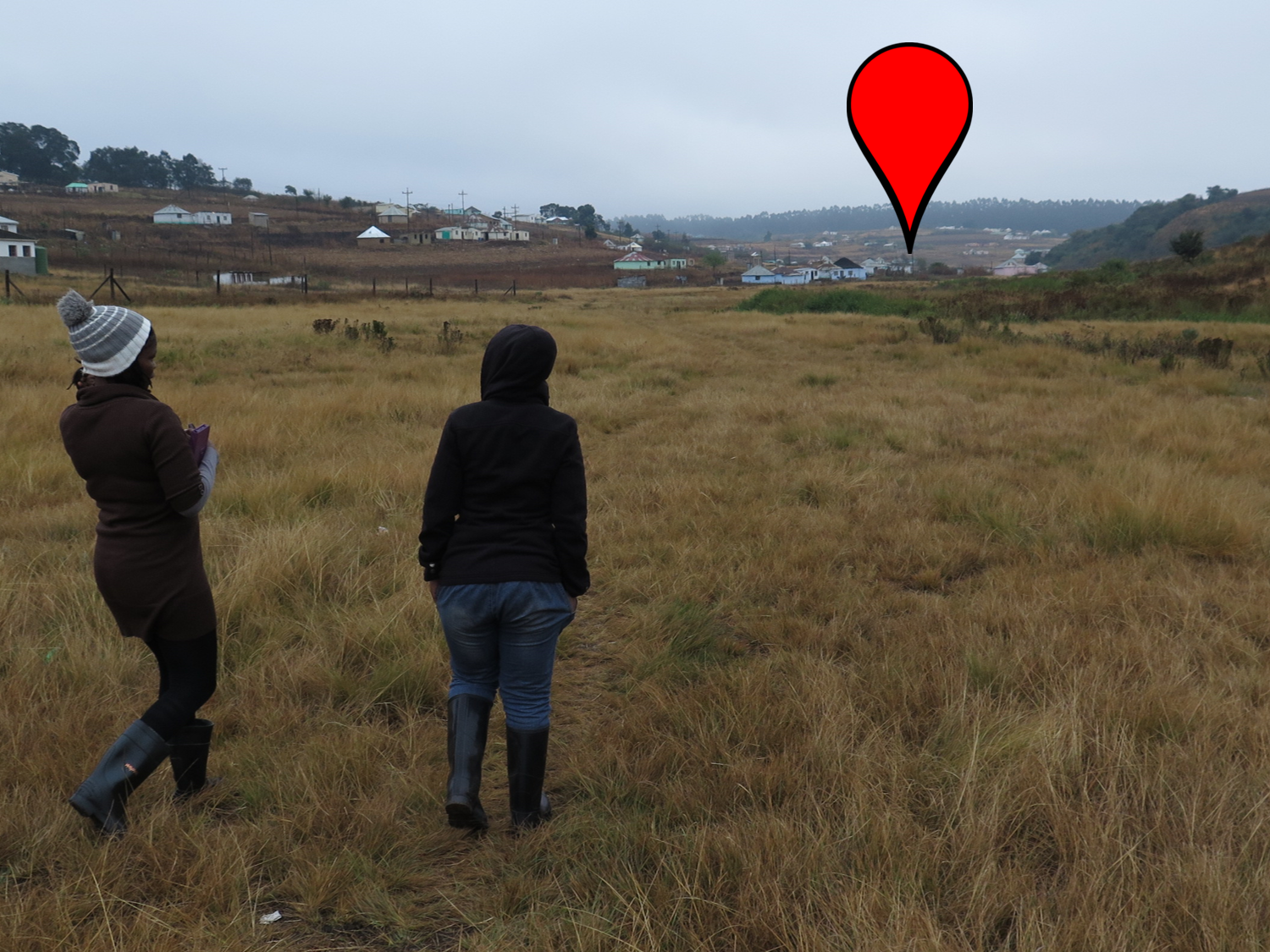
Wherever you live or travel, we would value each and every sighting record, and, with time, if we are successful, we will be able to paint their distribution map green!
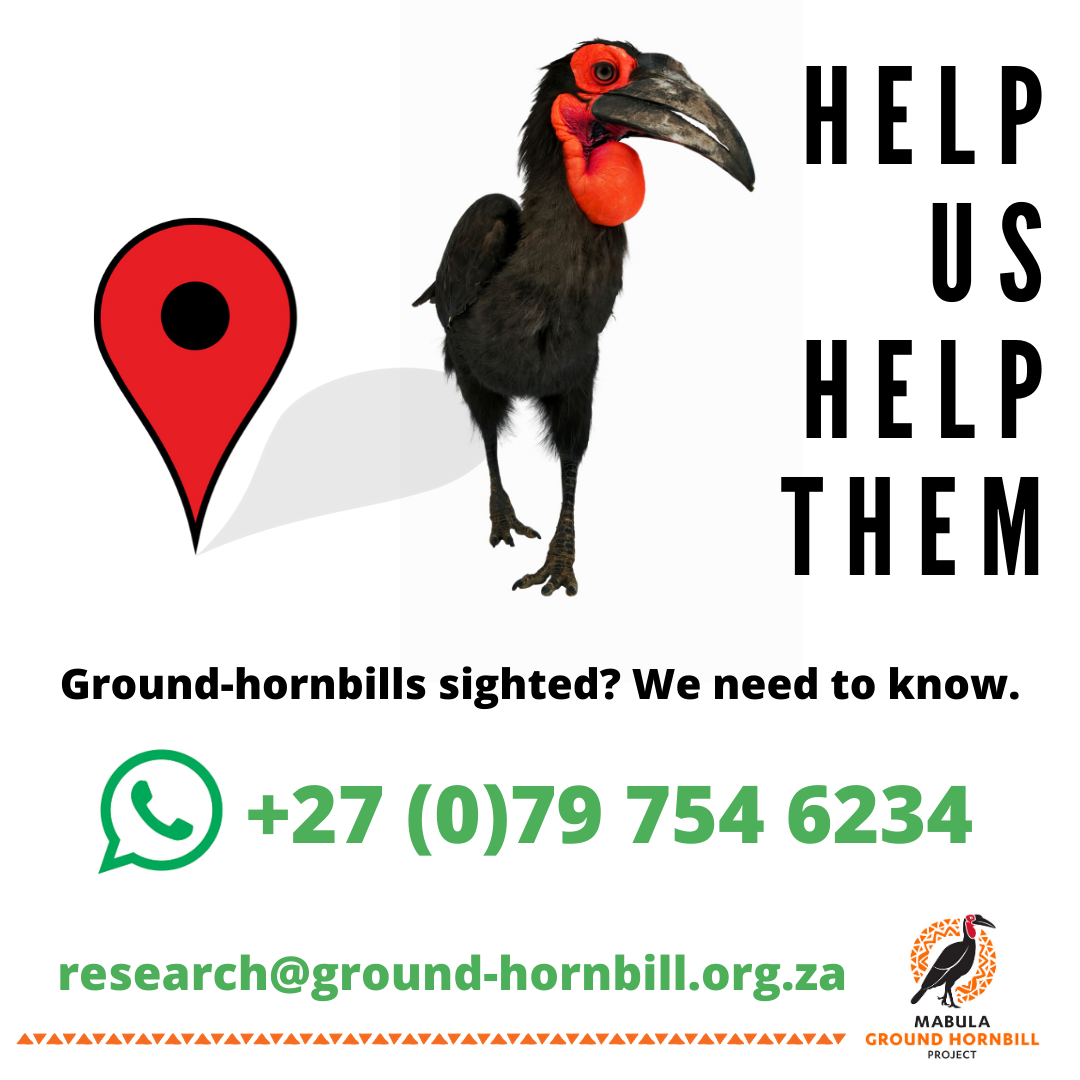
breeding season
2019-2020
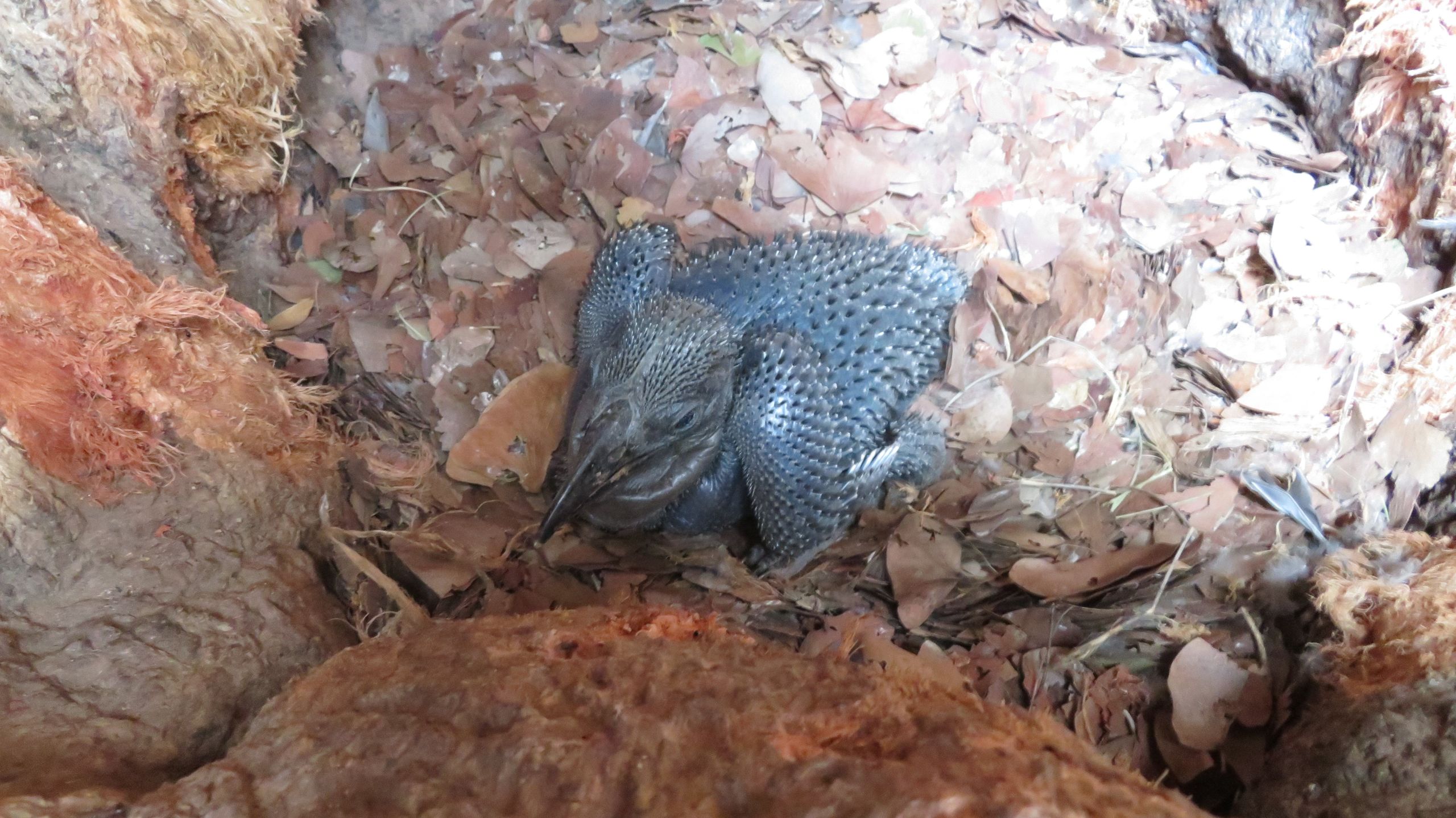
The breeding season saw a mixed bag of productivity. The Limpopo River Valley population had only one fledgling this year - see the photo above of spiky little Kongo.
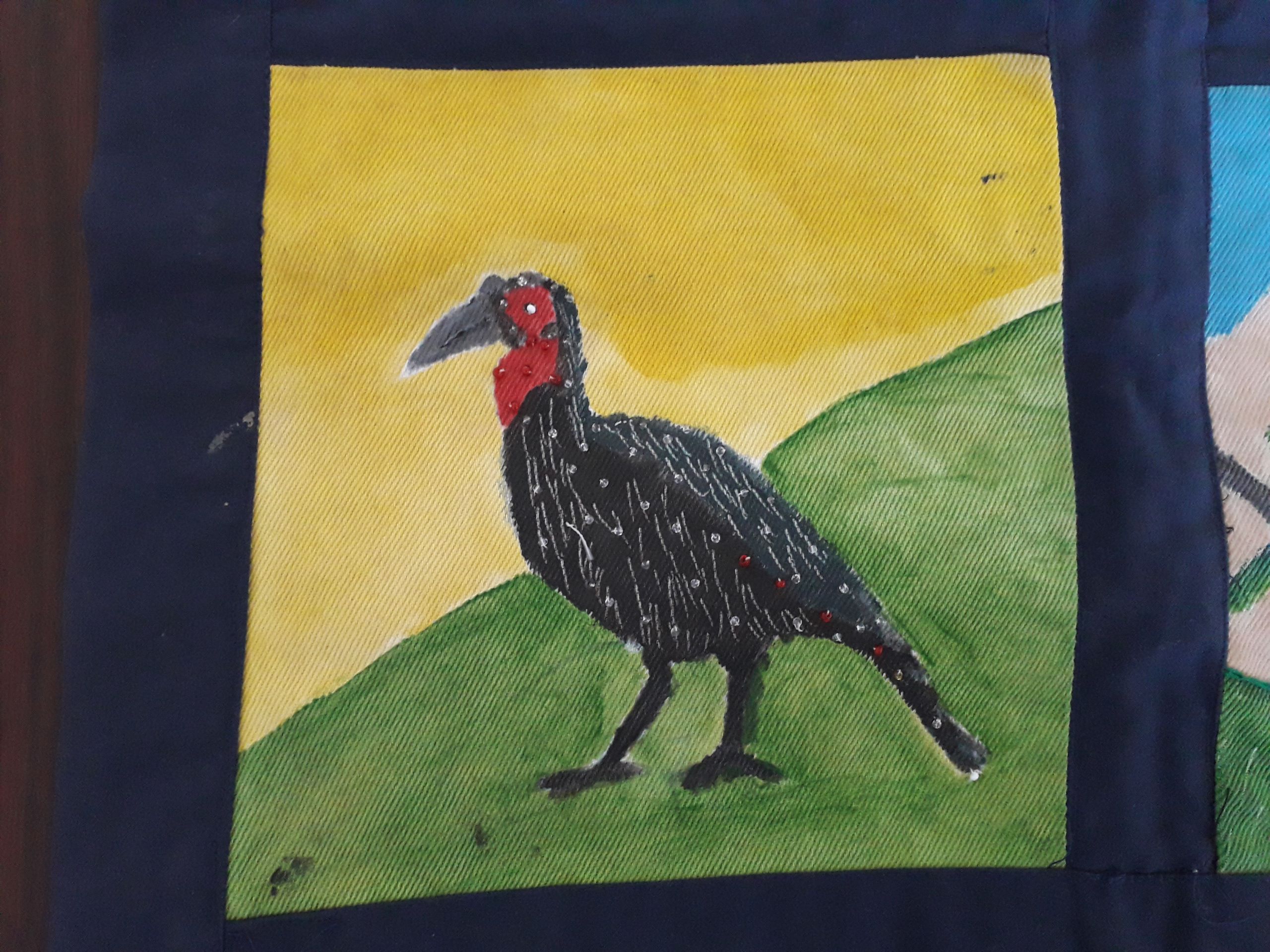
Some of the ground-hornbill craft work encountered this year.
Some of the ground-hornbill craft work encountered this year.
The nests monitored in KwaZulu-Natal had a better season with just over 50% of the nests both active and successful.
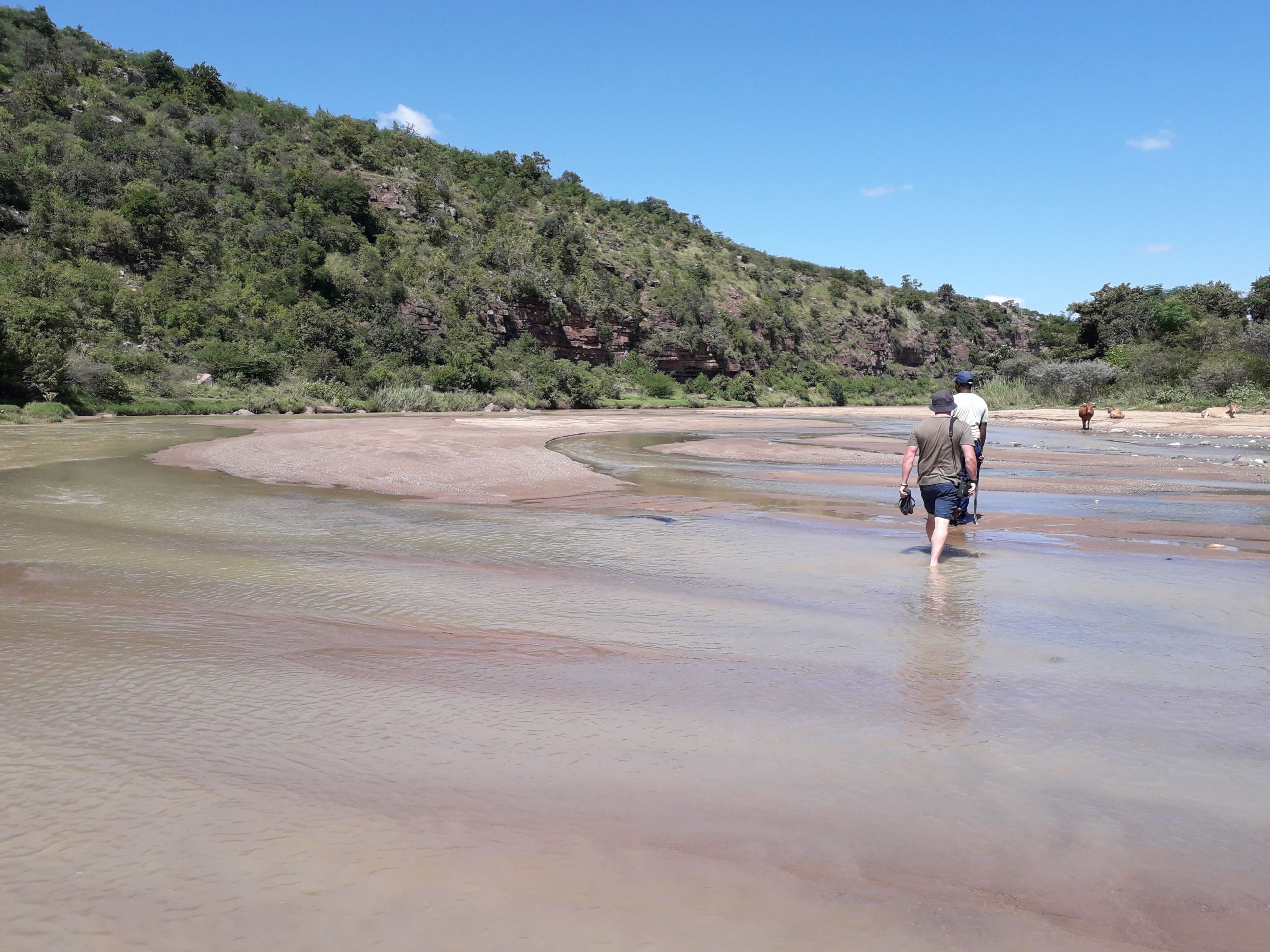
Following a riverbed to a new nest reported to us by the local sand miners. This trip yielded two new nests.
Following a riverbed to a new nest reported to us by the local sand miners. This trip yielded two new nests.
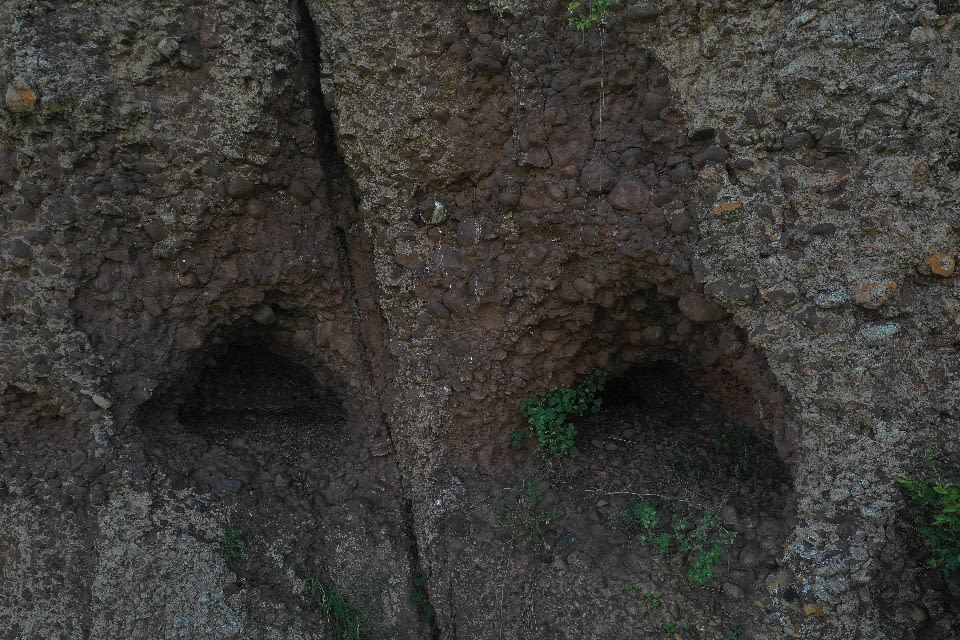
A very high nest on a river bank finally accessible using our drone. Sadly no signs of breeding this year but the group of six is still safe.
A very high nest on a river bank finally accessible using our drone. Sadly no signs of breeding this year but the group of six is still safe.
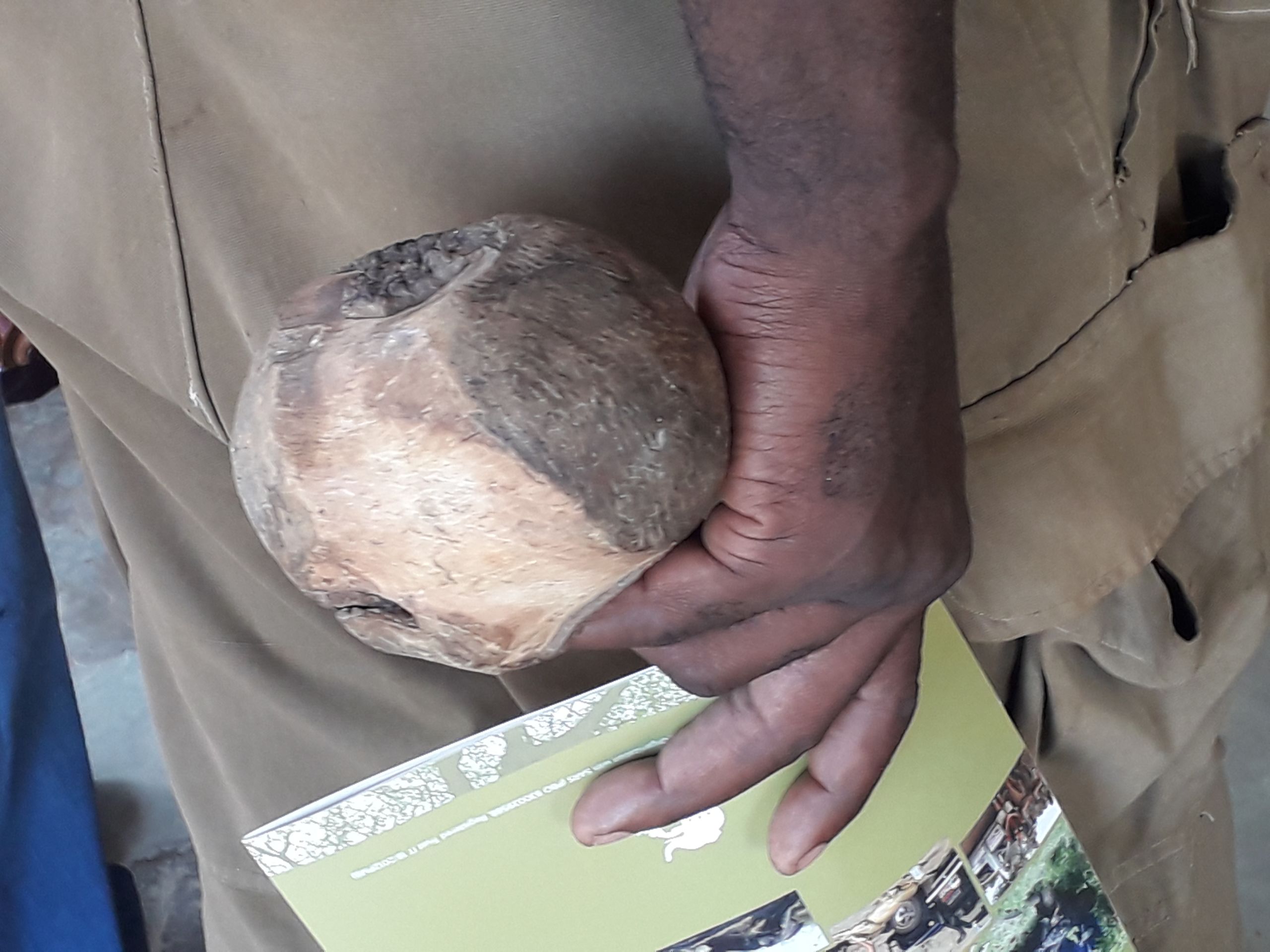
The new educational comic book, Vusa the ground-hornbill Guardian, is in good hands.
The new educational comic book, Vusa the ground-hornbill Guardian, is in good hands.
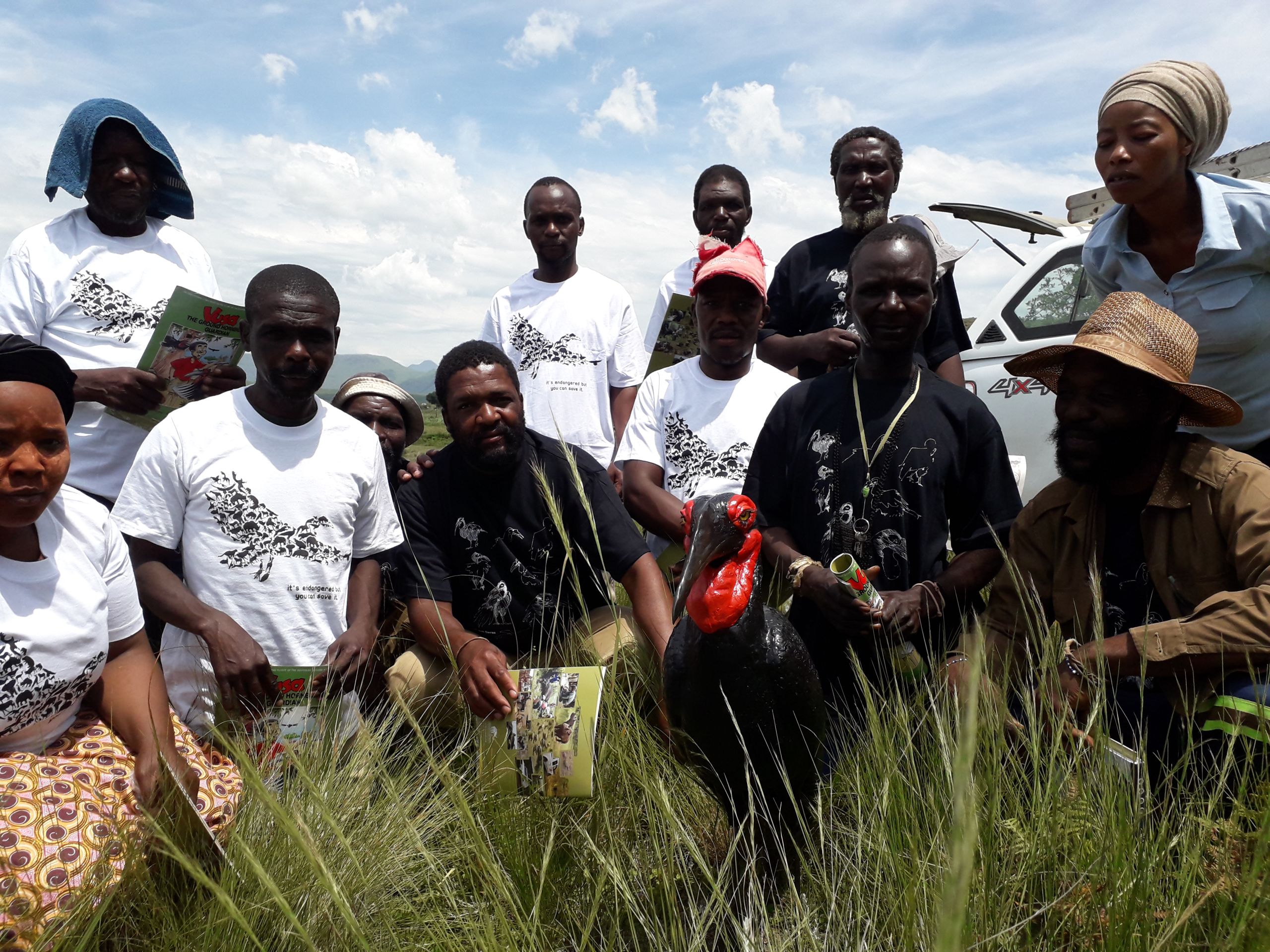
Group photo after a meeting with the leaders of the Amakhuze Traditional Authority Council. Another fantastic meeting co-hosted with our colleagues from the Woman's Leadership and Training Programme.
Group photo after a meeting with the leaders of the Amakhuze Traditional Authority Council. Another fantastic meeting co-hosted with our colleagues from the Woman's Leadership and Training Programme.
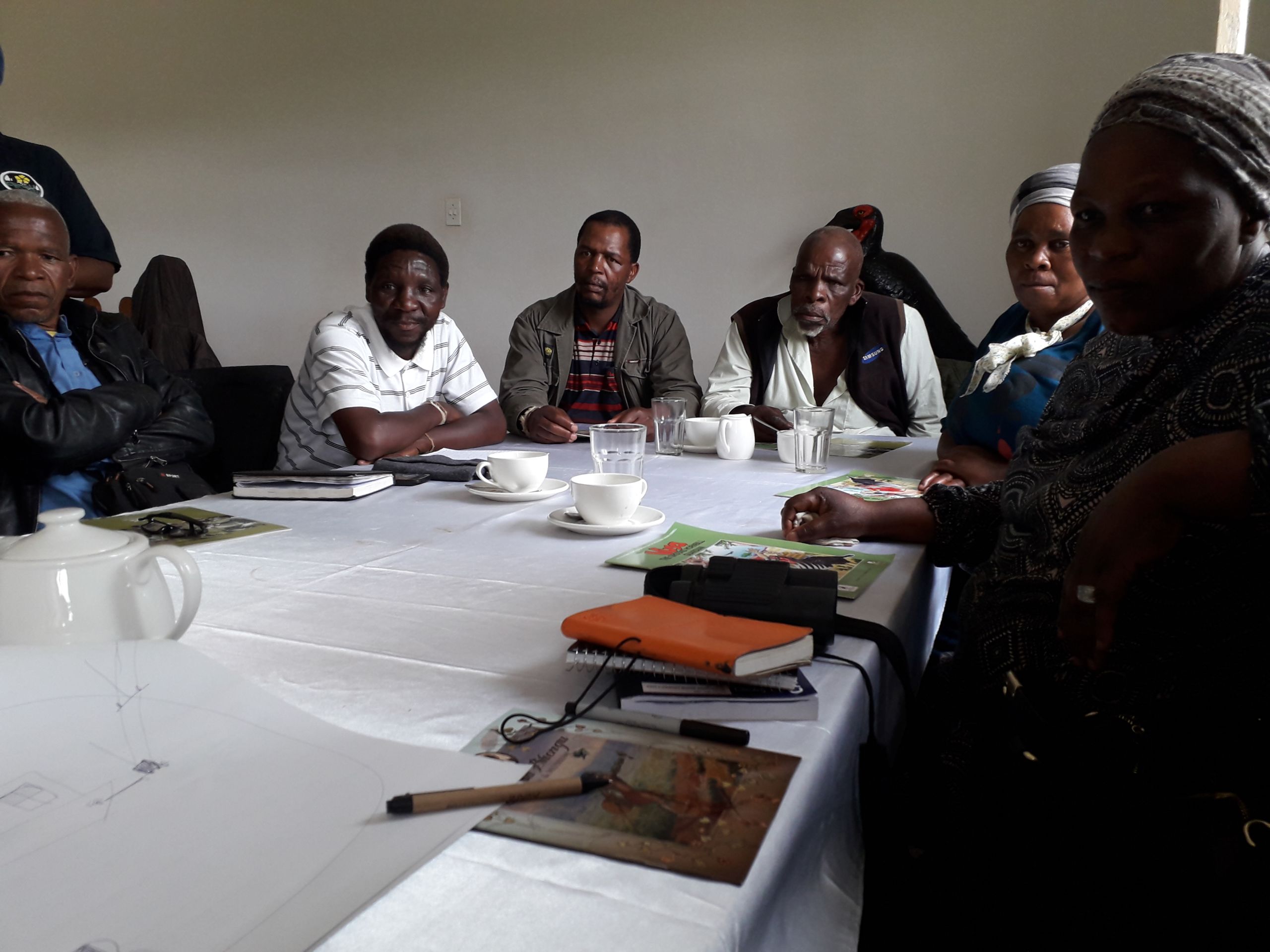
Another successful meeting - all in all we met with five traditional councils and all have decided, given the longevity of the species, that they have declared this the Decade of the iNsingizi. This is an incredible outcome.
Another successful meeting - all in all we met with five traditional councils and all have decided, given the longevity of the species, that they have declared this the Decade of the iNsingizi. This is an incredible outcome.
new reintroductions
2020 progress until the lockdown was declared
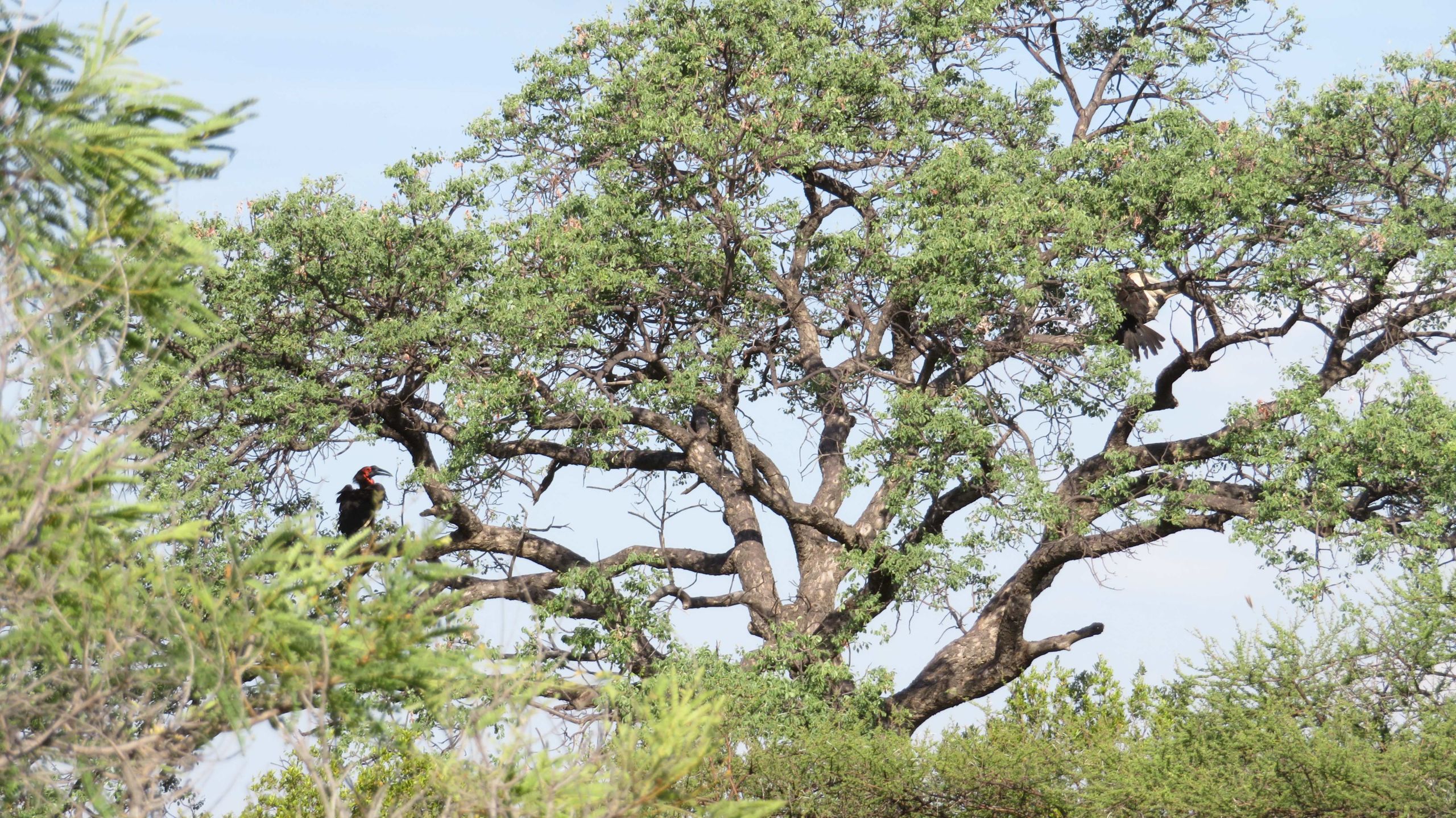

The Loskop Dam reintroduced group bred again this year and fledged their chick successfully!
The Loskop Dam reintroduced group bred again this year and fledged their chick successfully!
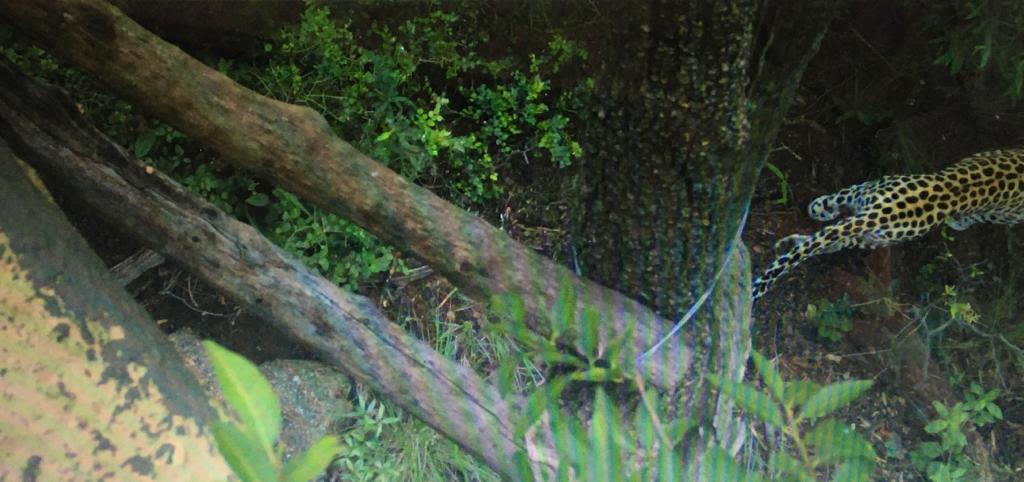
Despite both spotty and stripey nest visitors.
Despite both spotty and stripey nest visitors.
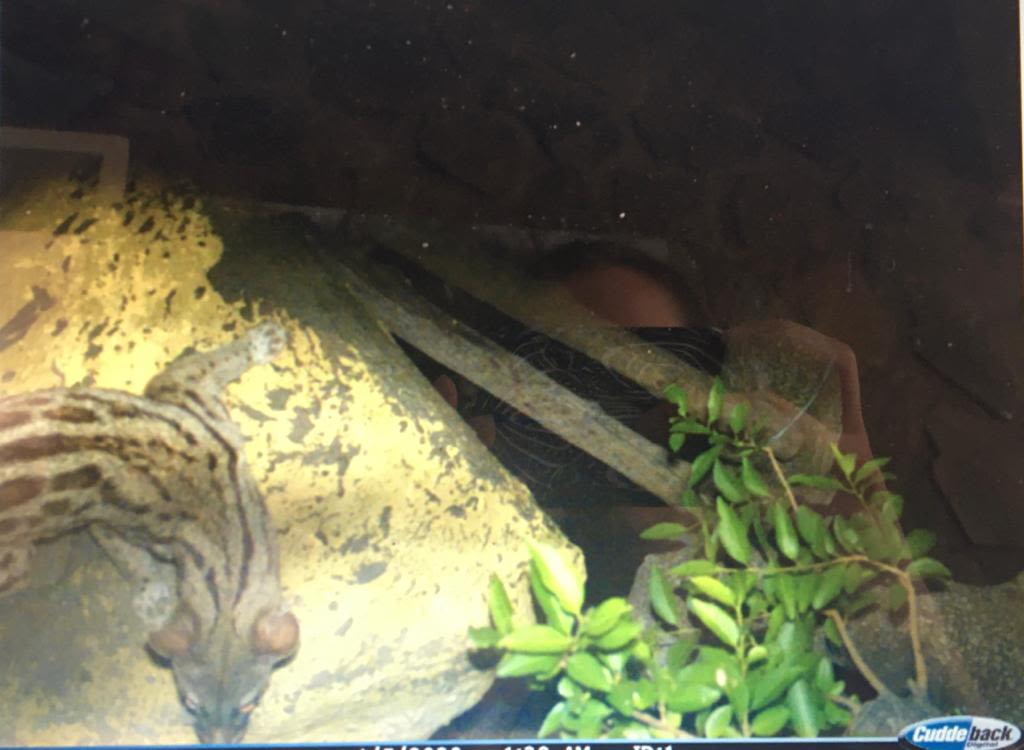

New group one for the year being released into the soft-release aviary.
New group one for the year being released into the soft-release aviary.
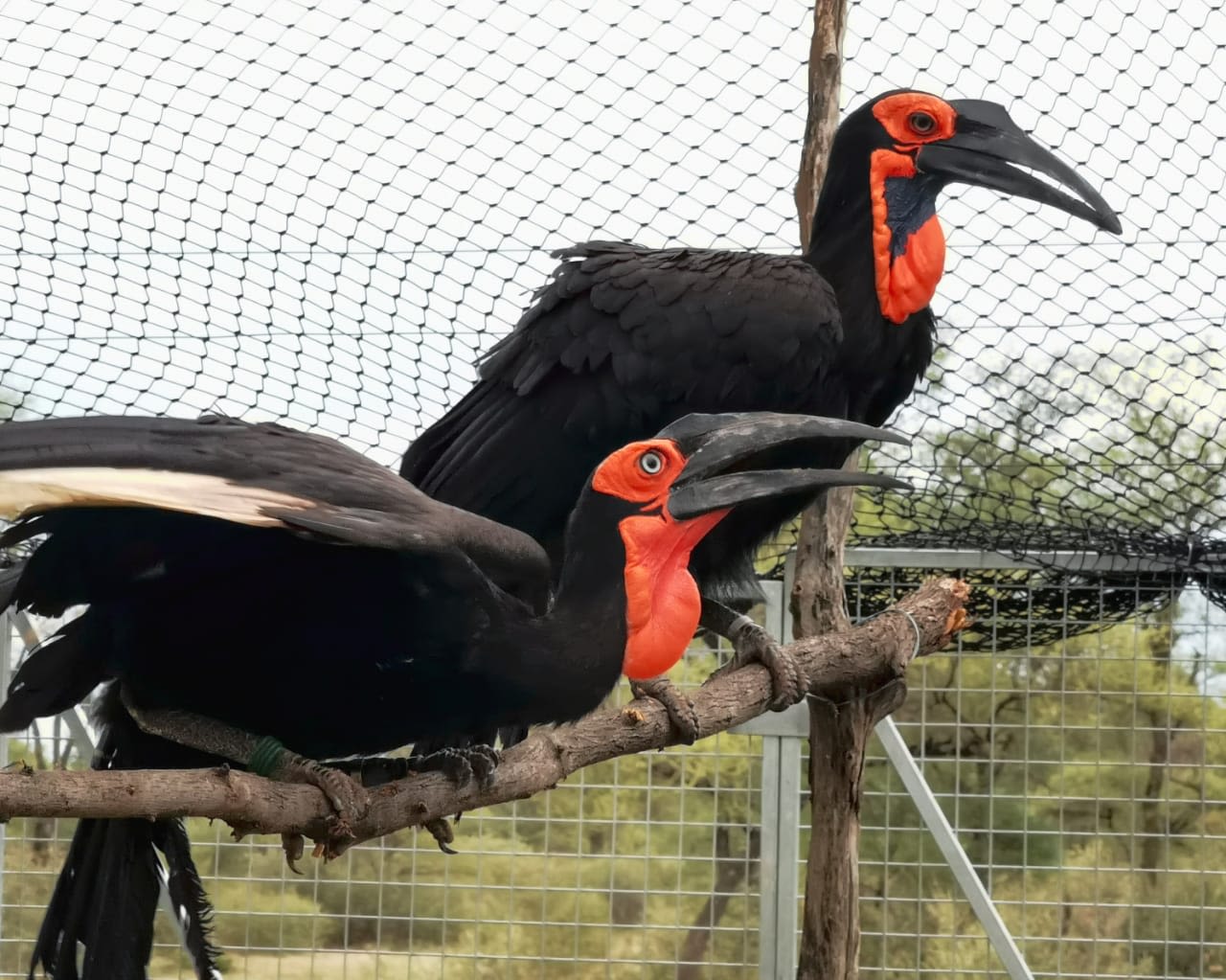
This striking pair was well-bonded prior to being moved to the reintroduction aviary for a soft-release.
This striking pair was well-bonded prior to being moved to the reintroduction aviary for a soft-release.
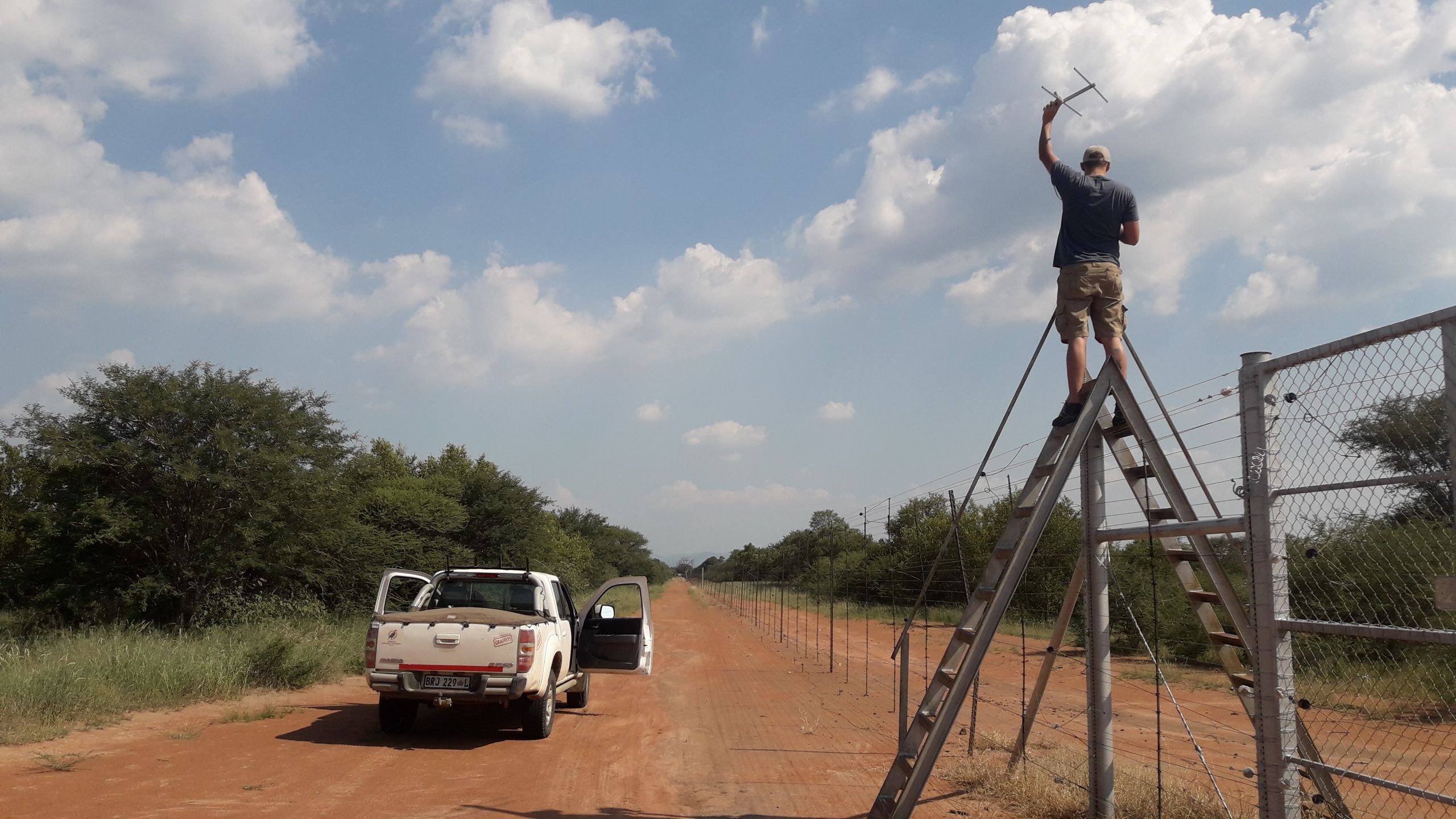
They have settled across several farms, around 11 km from the site of reintroduction. The pair have split from the young male but he appears to be tracking their movements. Hopefully, once they feel safe and settled they will take him in.
They have settled across several farms, around 11 km from the site of reintroduction. The pair have split from the young male but he appears to be tracking their movements. Hopefully, once they feel safe and settled they will take him in.
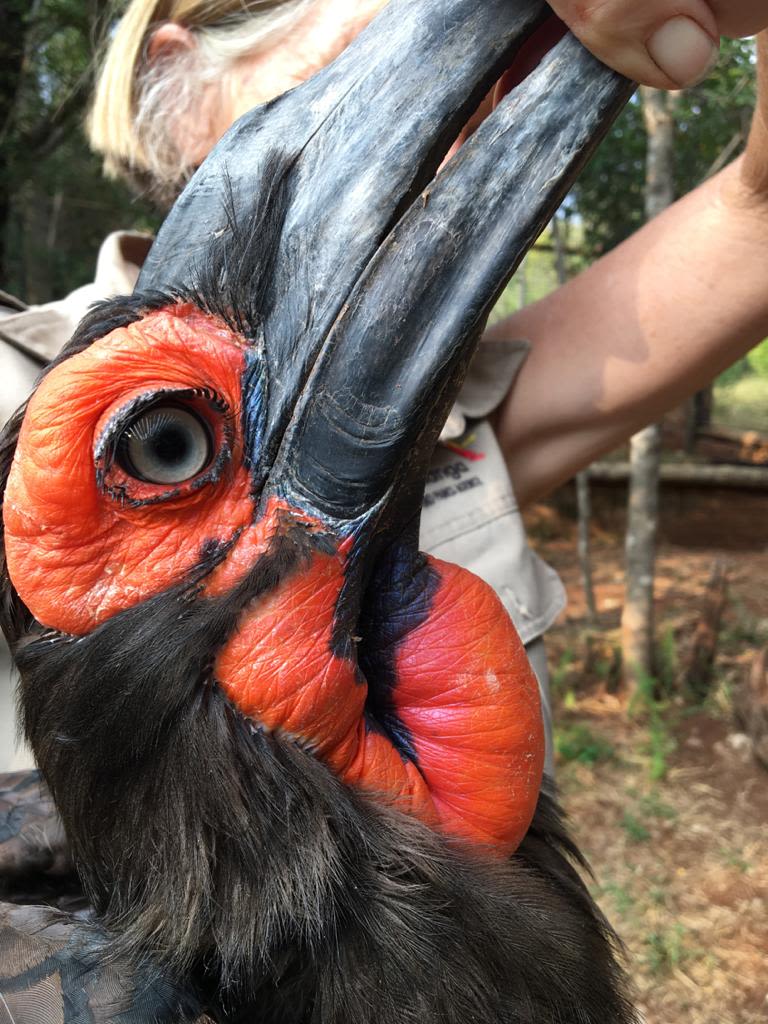
Here Delecia Gunn holds one of the birds for the pre-release health checks prior to this group being moved to their reintroduction aviary. These health checks are not just a baseline to use against any future tests should the need arise, but also ensures that we know the birds are 100% healthy and not carrying any pathogens into their new environments when we let them free.
Here Delecia Gunn holds one of the birds for the pre-release health checks prior to this group being moved to their reintroduction aviary. These health checks are not just a baseline to use against any future tests should the need arise, but also ensures that we know the birds are 100% healthy and not carrying any pathogens into their new environments when we let them free.
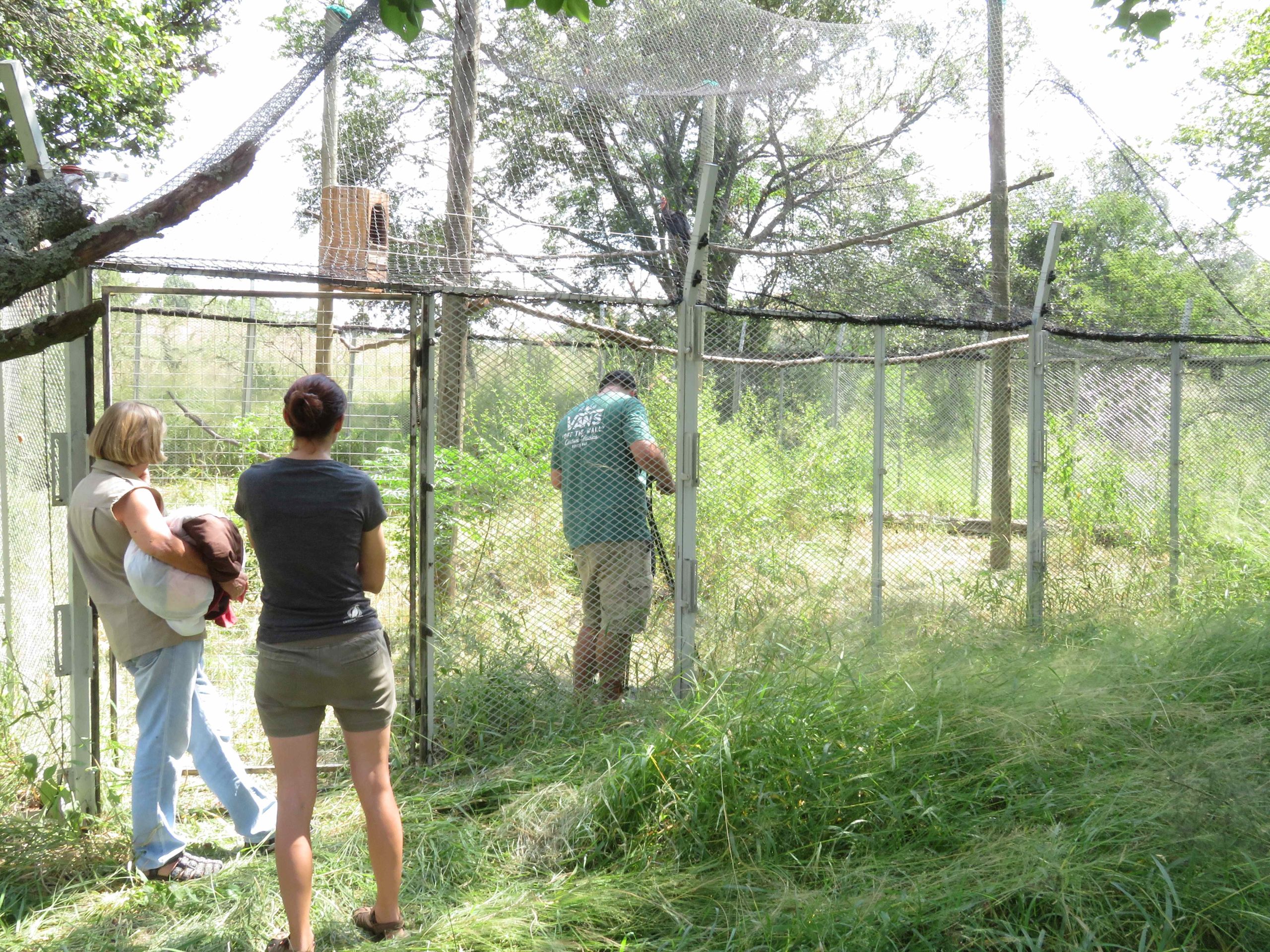
Bird-of-the-Year designation has brought a fantastic amount of media attention to the species - for which we are incredibly grateful. Camera work here of the soft release aviary for group number 2 to be let loose on the world this year.
Bird-of-the-Year designation has brought a fantastic amount of media attention to the species - for which we are incredibly grateful. Camera work here of the soft release aviary for group number 2 to be let loose on the world this year.
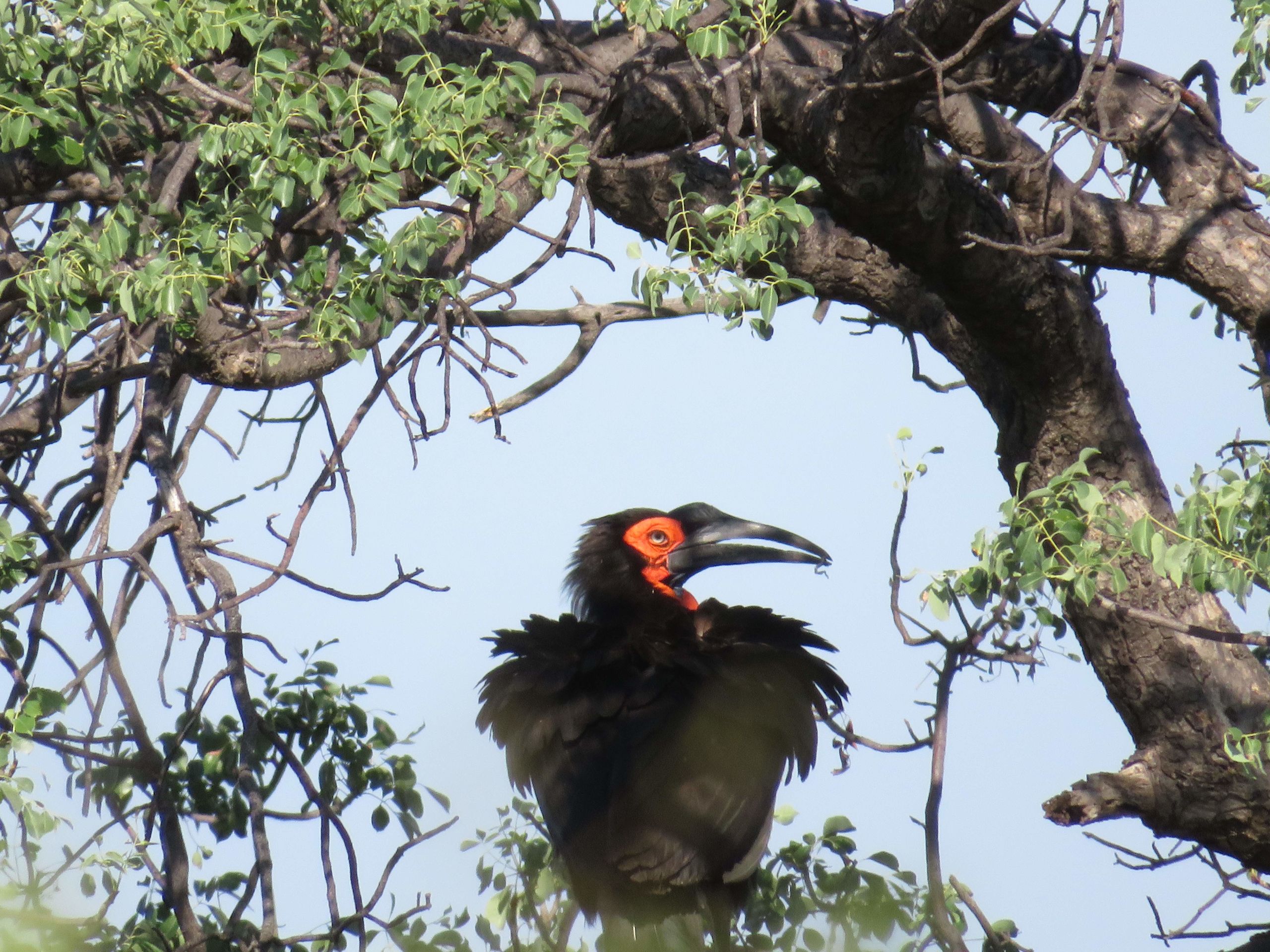
This group will be set free as soon as the lockdown is completed and the team is able to move freely again.
This group will be set free as soon as the lockdown is completed and the team is able to move freely again.
HOW TO HELP US THROUGH THESE TOUGH TIMES
We have received the rather depressing news that some of our European partners will not be able to support us as they no longer have the luxury of surplus funding to contribute to conservation.
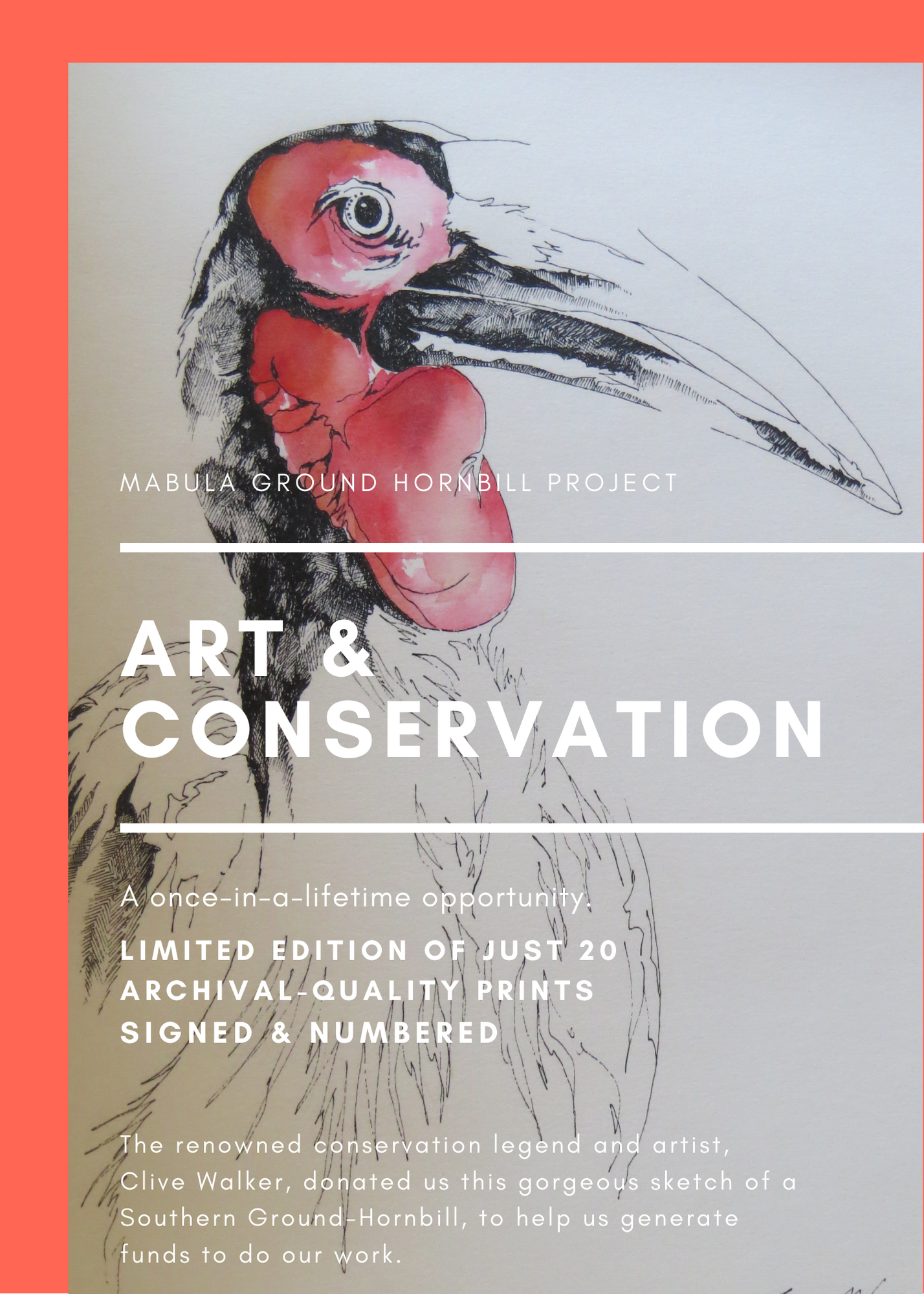
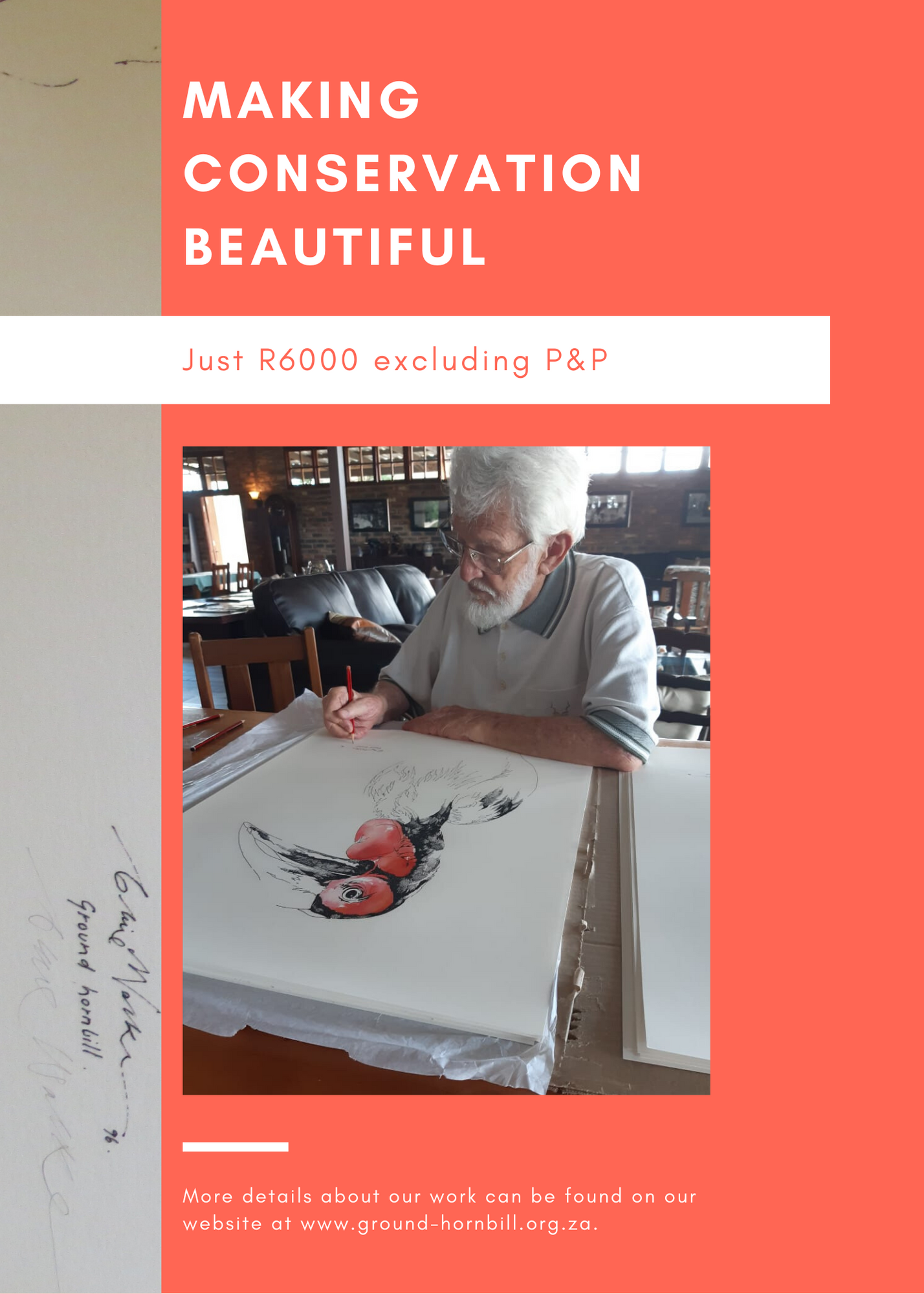
BirdLife South Africa
Bird of the Year 2020
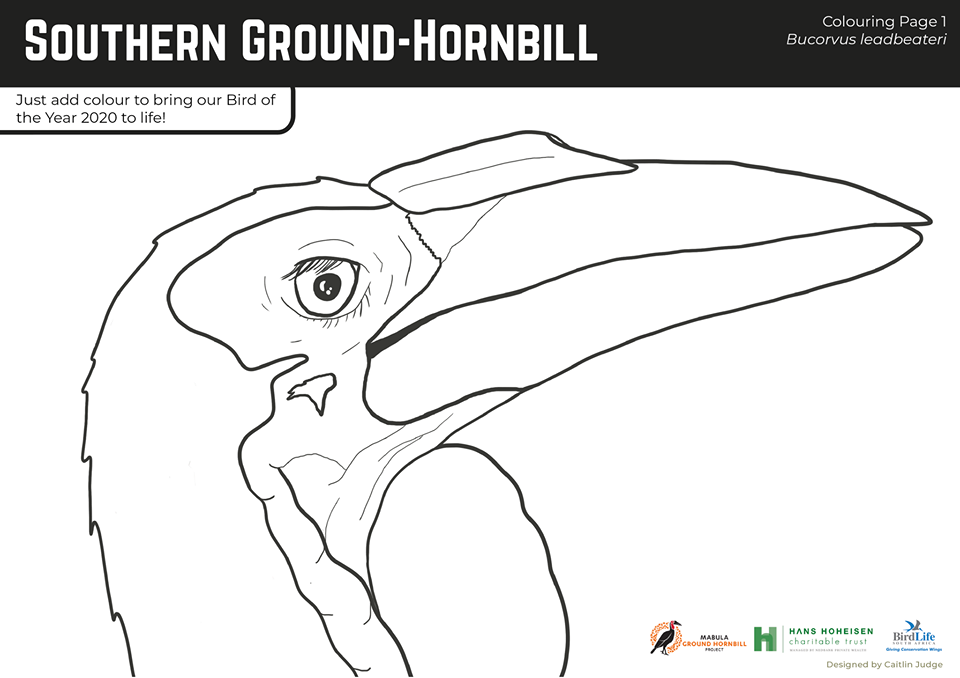
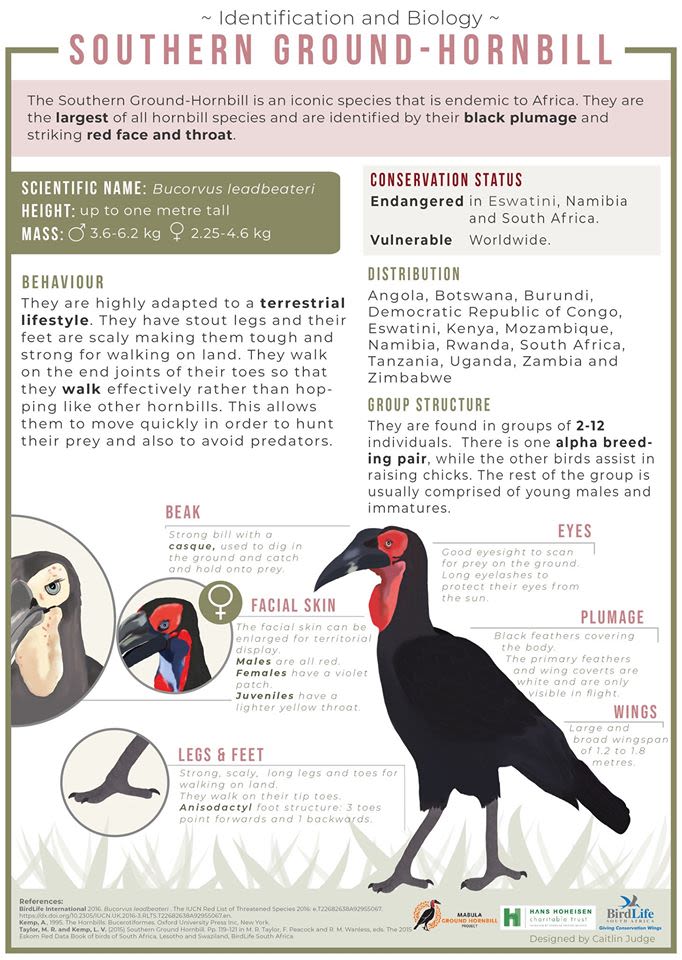
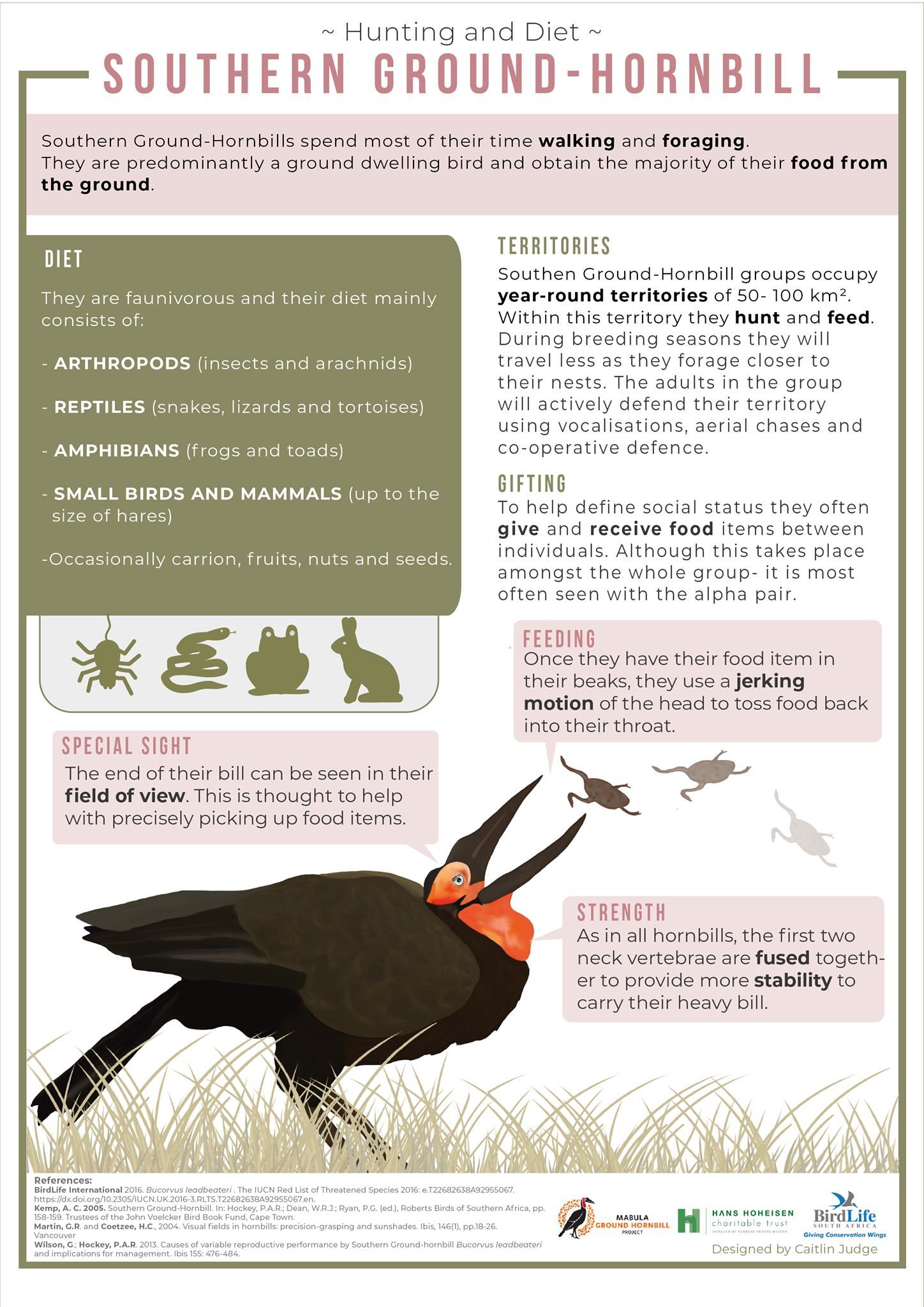
meet the team
HEINRICH NEL
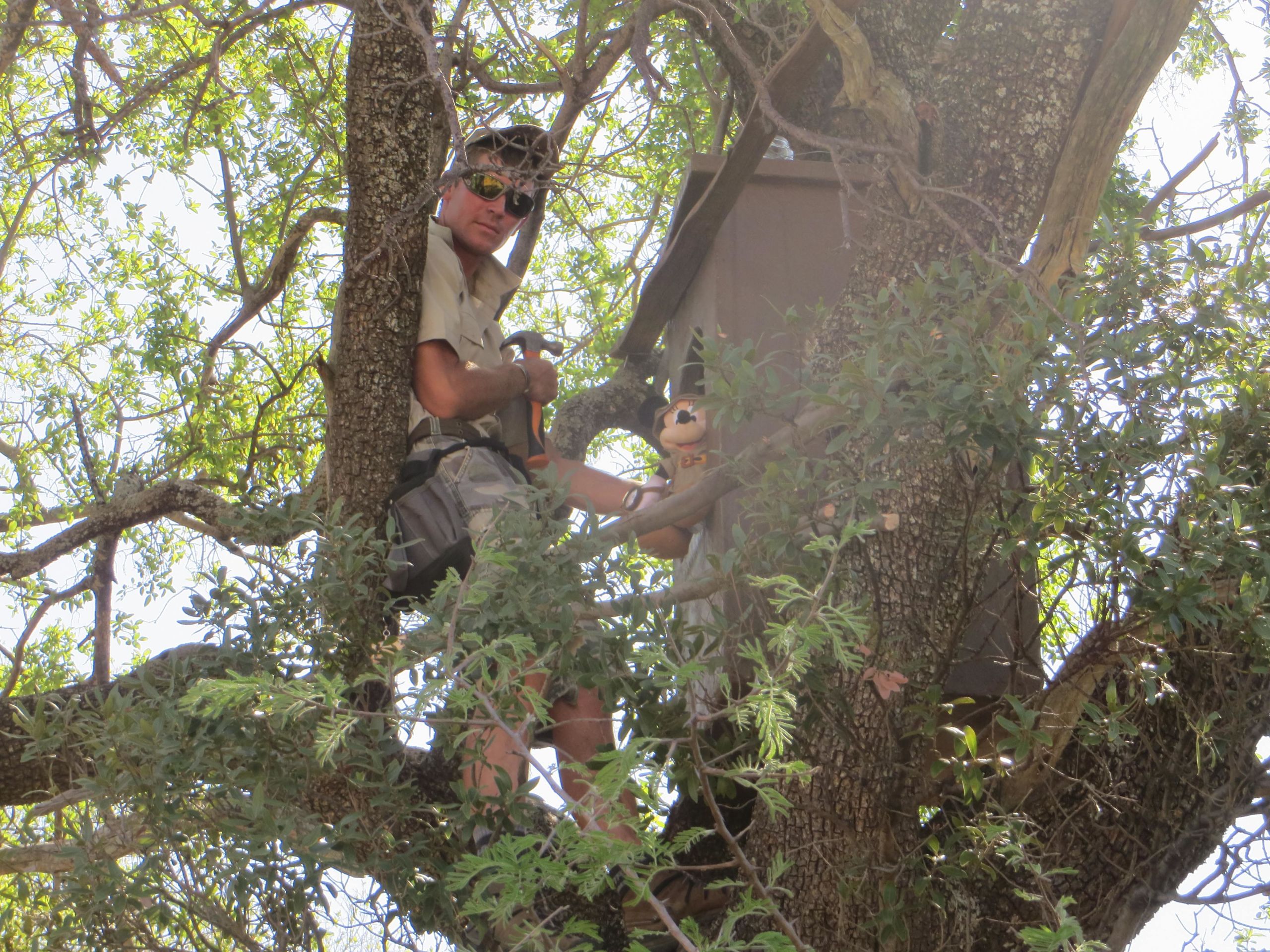
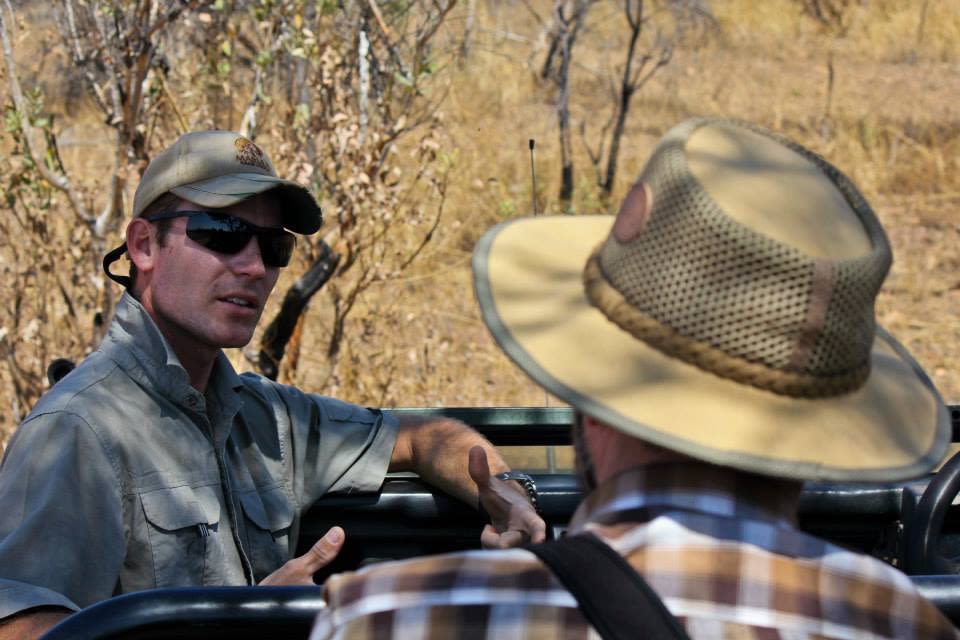
Hein sharing his love of ground-hornbills with guests to the project
Hein sharing his love of ground-hornbills with guests to the project
I was incredibly lucky to have grown up in the Kruger National Park from the young age of two, which I consider a great privilege very few people will ever get to experience. My first memories are of the bushveld and its wildlife that surrounded me which ultimately became a part of my soul. Being able to live amongst wildlife sparked an immense interest, to observe and learn from them in their natural habitat. At the age of 14, we left the park with lots of heartache, but onto new adventures.
After I matriculated, I worked in the construction industry for five years. It was during this time that I met my wife Natasha, who was working in the conservation industry. This reignited the flame and passion I had for the bushveld and its wildlife.
Helping out over weekends when I used to visit her was the highlight of my week. Lucy Kemp, Project Manager of the Mabula Ground Hornbill Project, offered me a position as camp manager, which I eagerly accepted with great excitement.
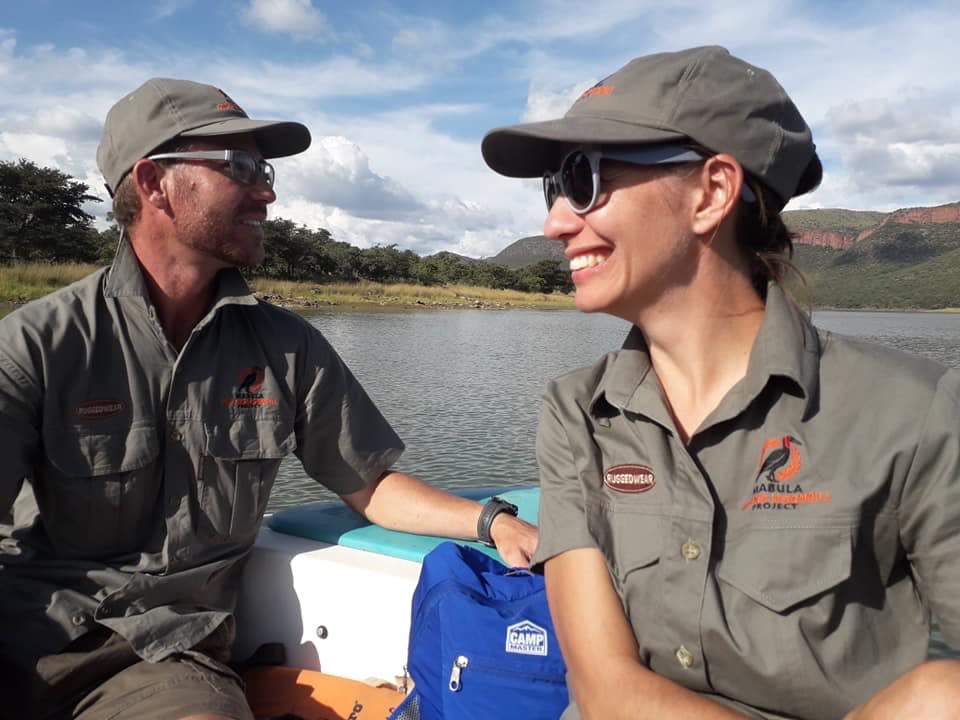
Hein and Natasha on Loskop Dam Nature Reserve, which is now home.
Hein and Natasha on Loskop Dam Nature Reserve, which is now home.
Since then I have learned a great deal about ground-hornbills and the important role they play as a flagship species in our ecosystems. I have now grown into the role of research assistant, specifically coordinating releases, through setting up mobile sites, training new monitors, monitoring and engaging with landowners and community members in areas where ground-hornbills naturally still occur.
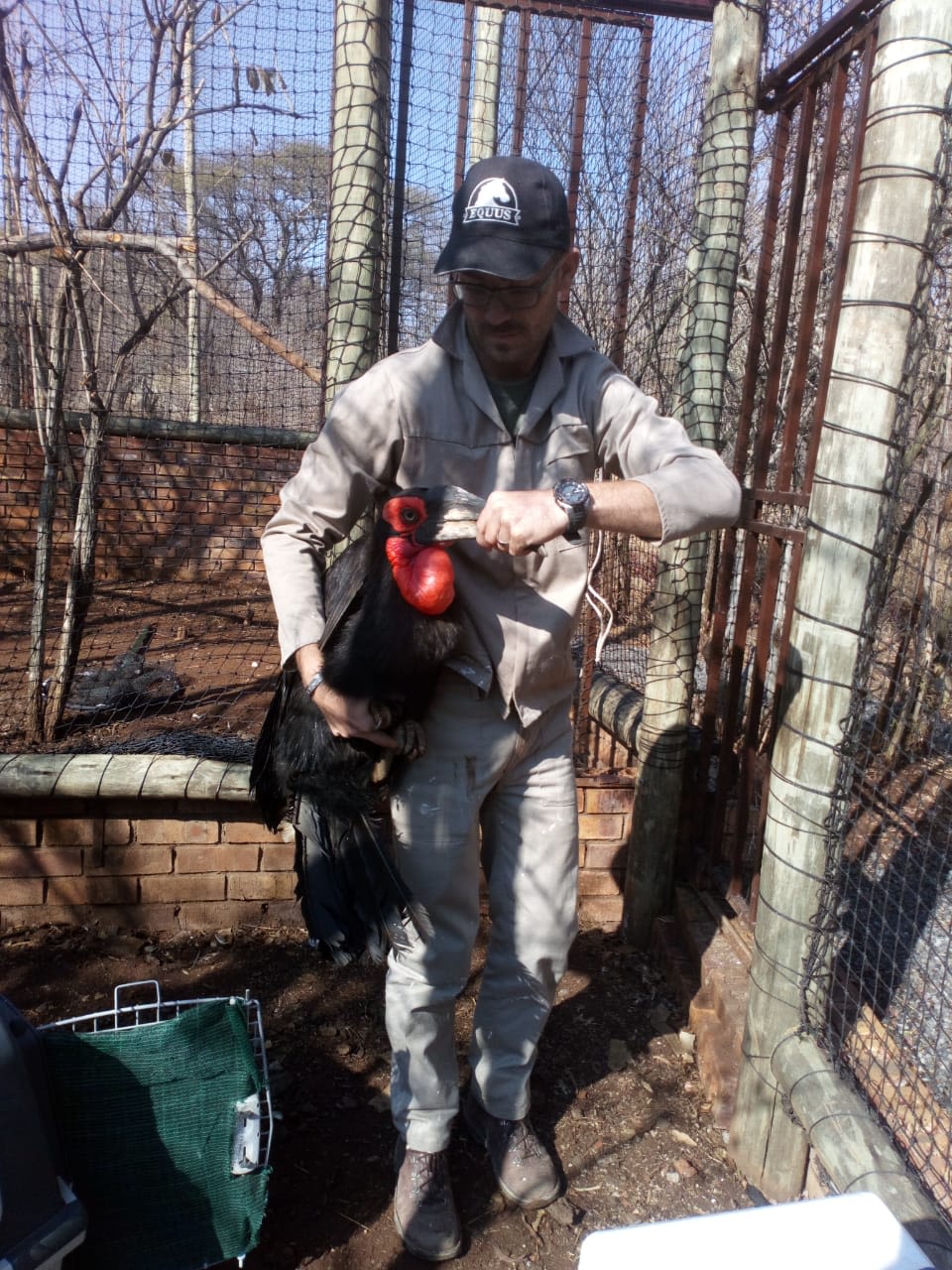
I still learn new things every day from this enigmatic bird. One is never too old to learn, and I hope my contribution to their conservation, will be as meaningful as the difference they have made in my life.
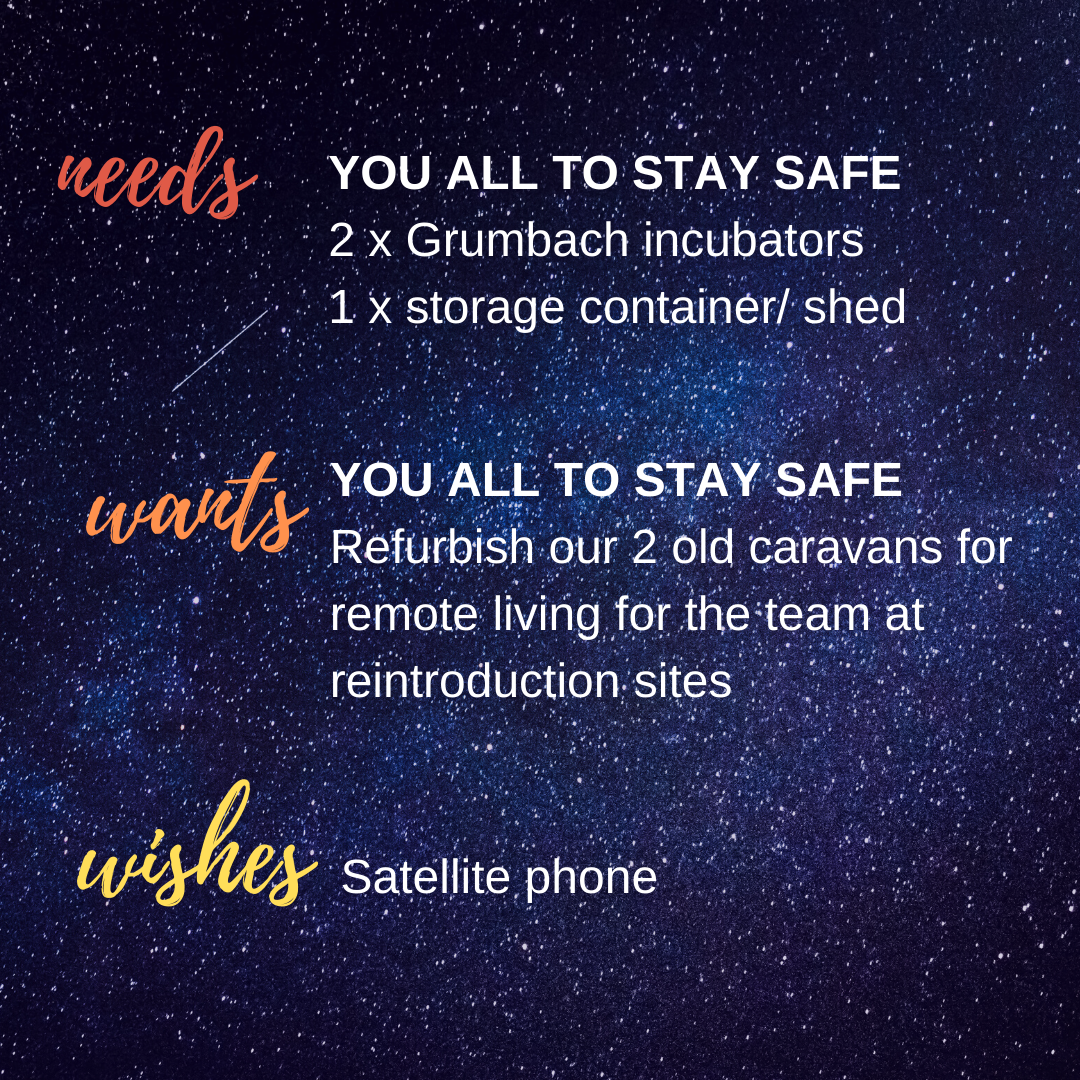
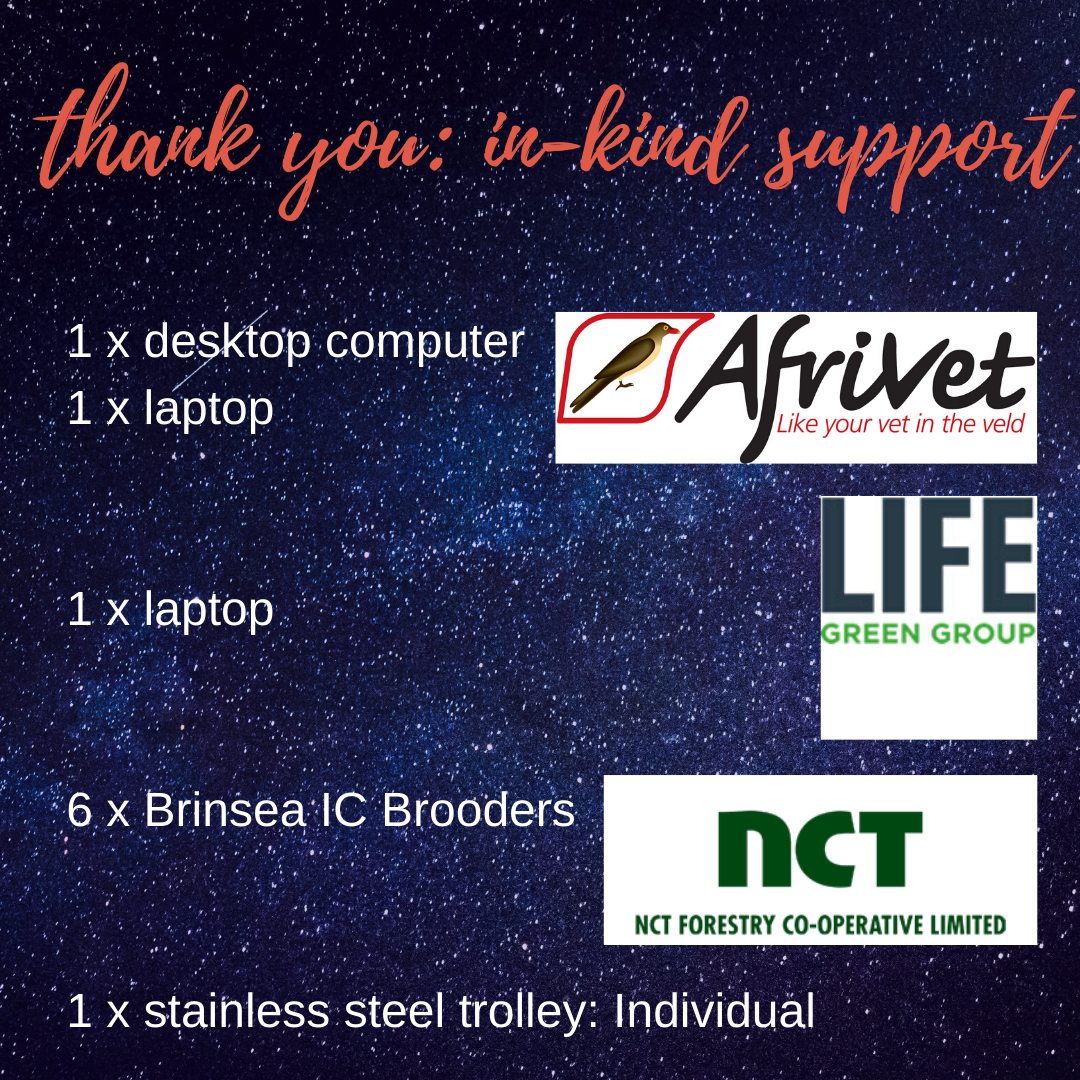
We would hate to lose you, but if you no longer wish to receive our news, then please drop us a line at project@ground-hornbill.org.za

